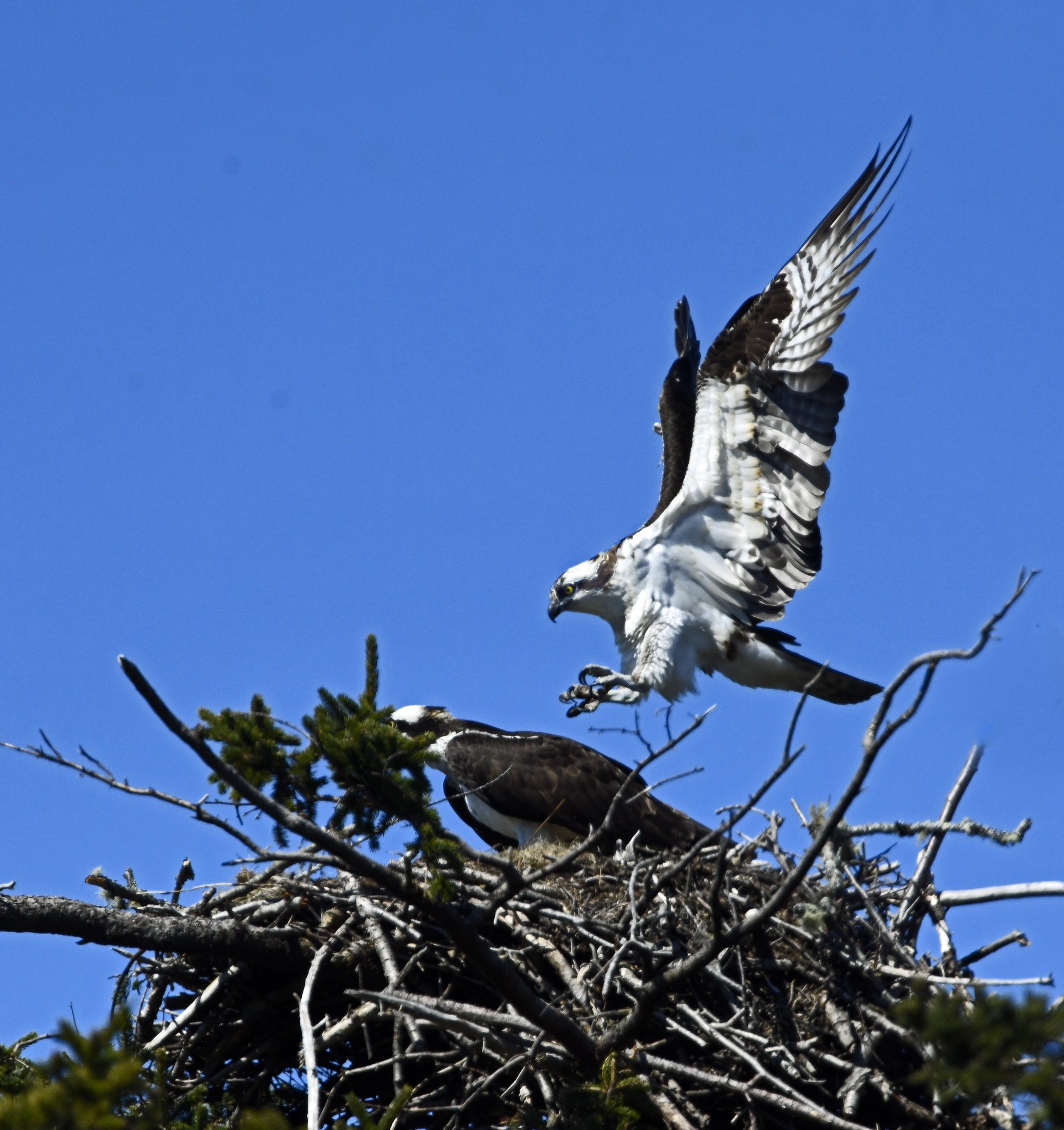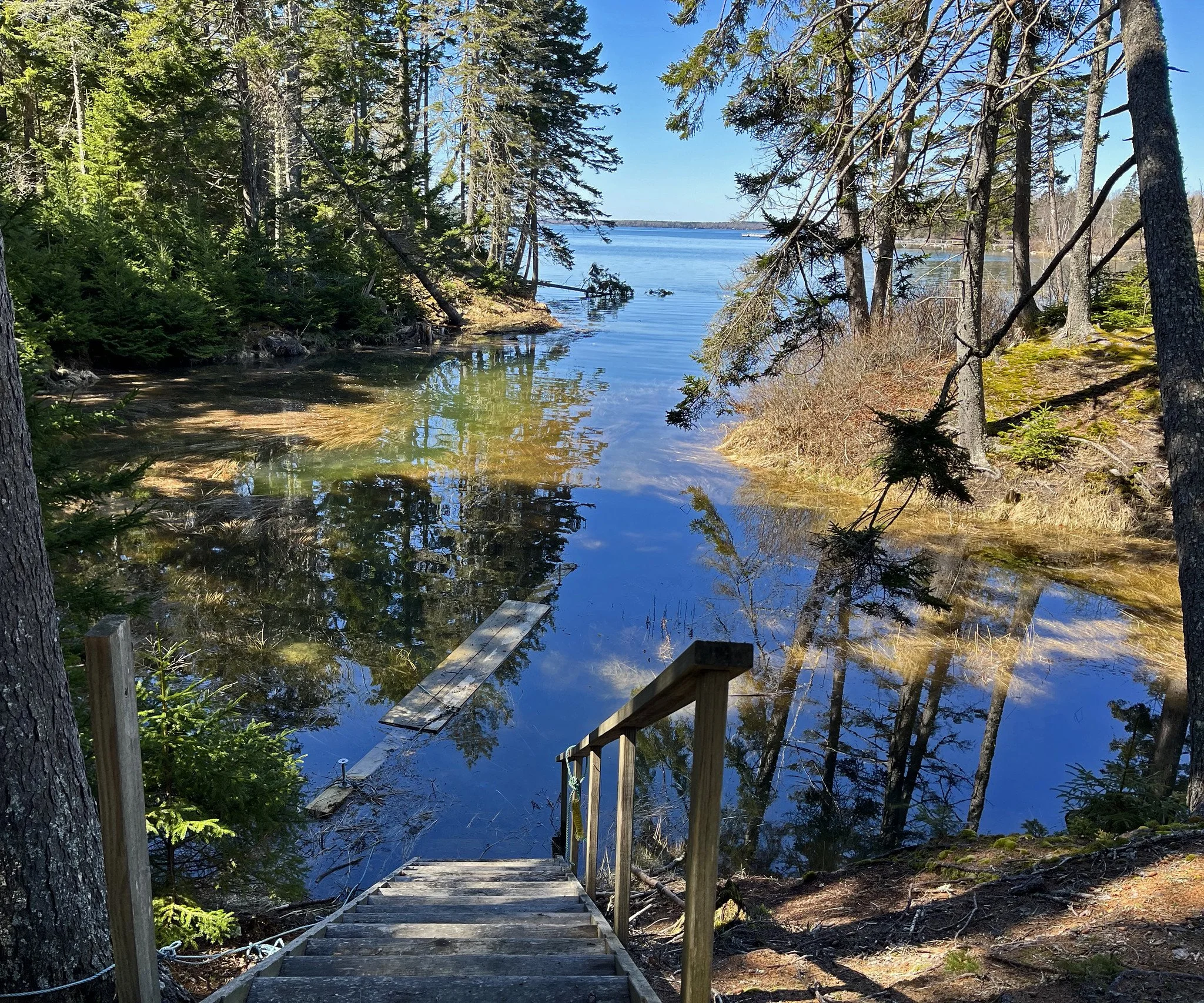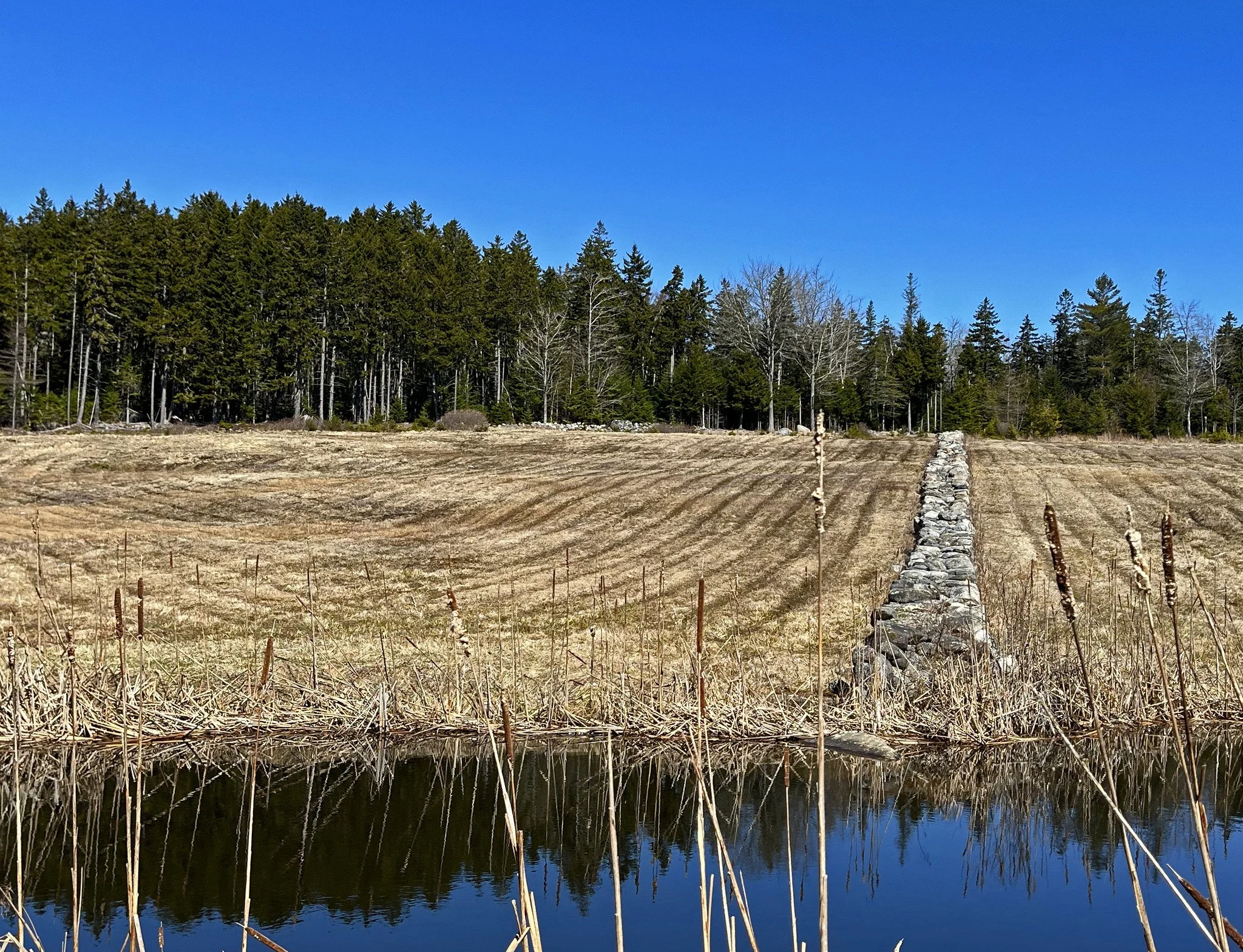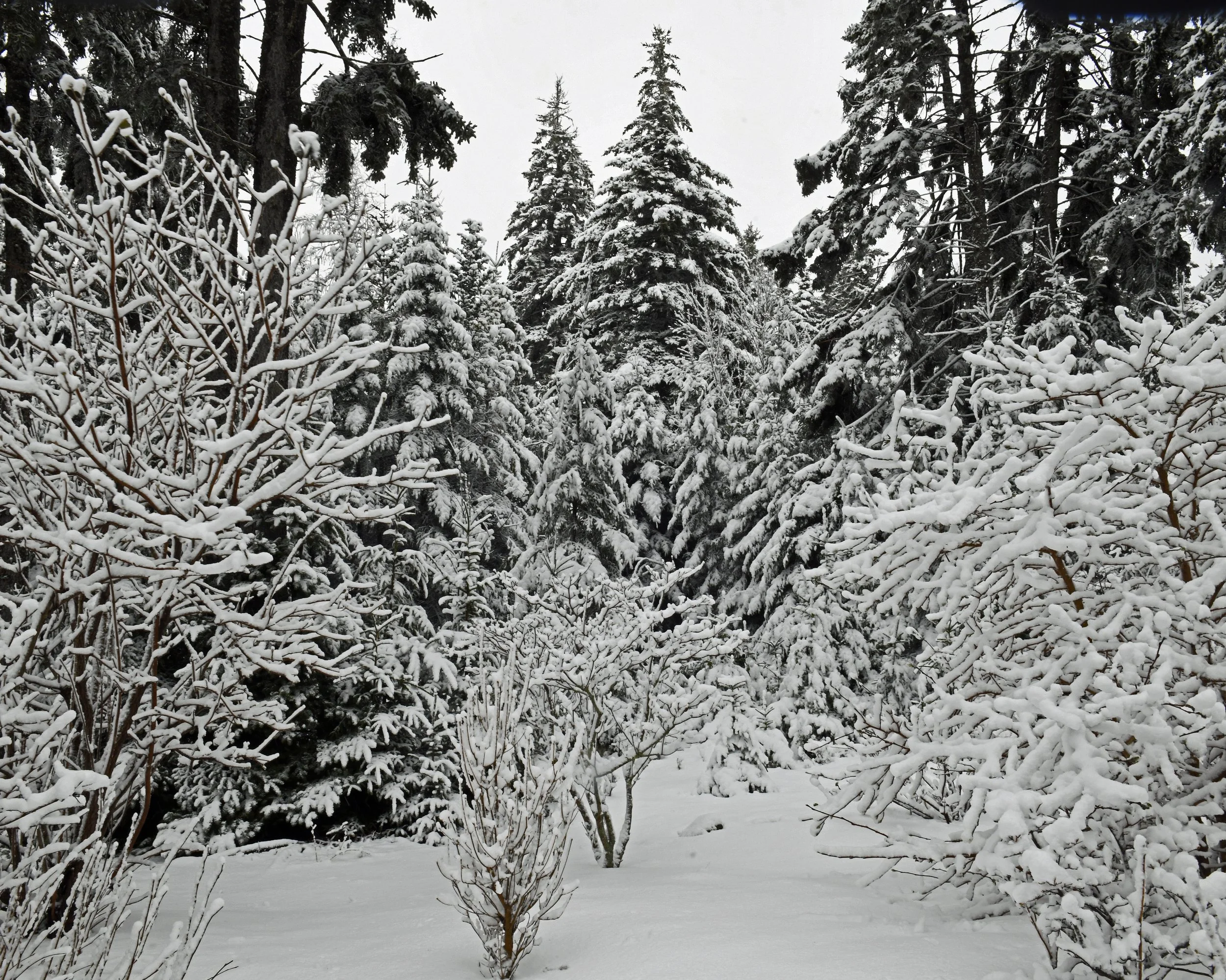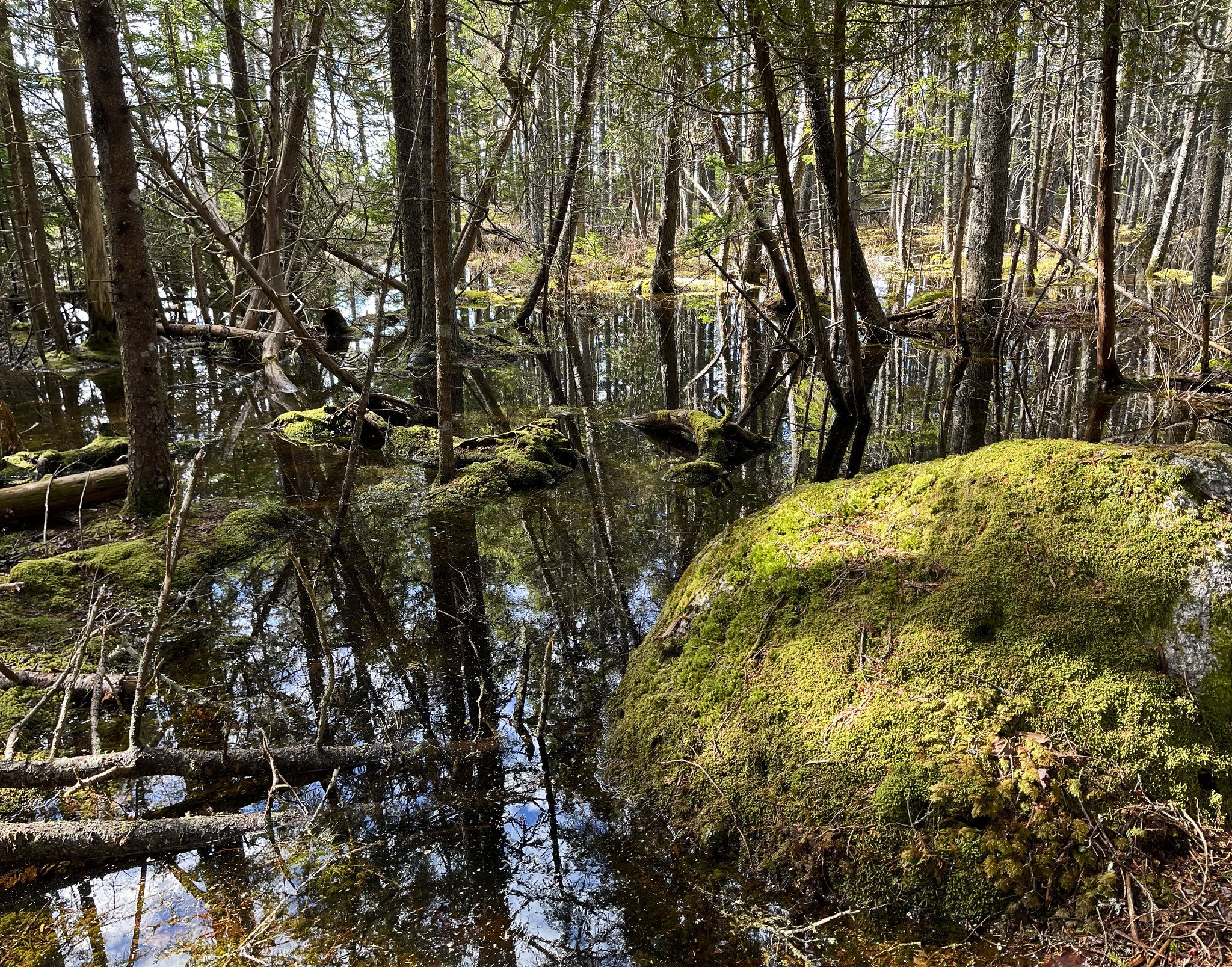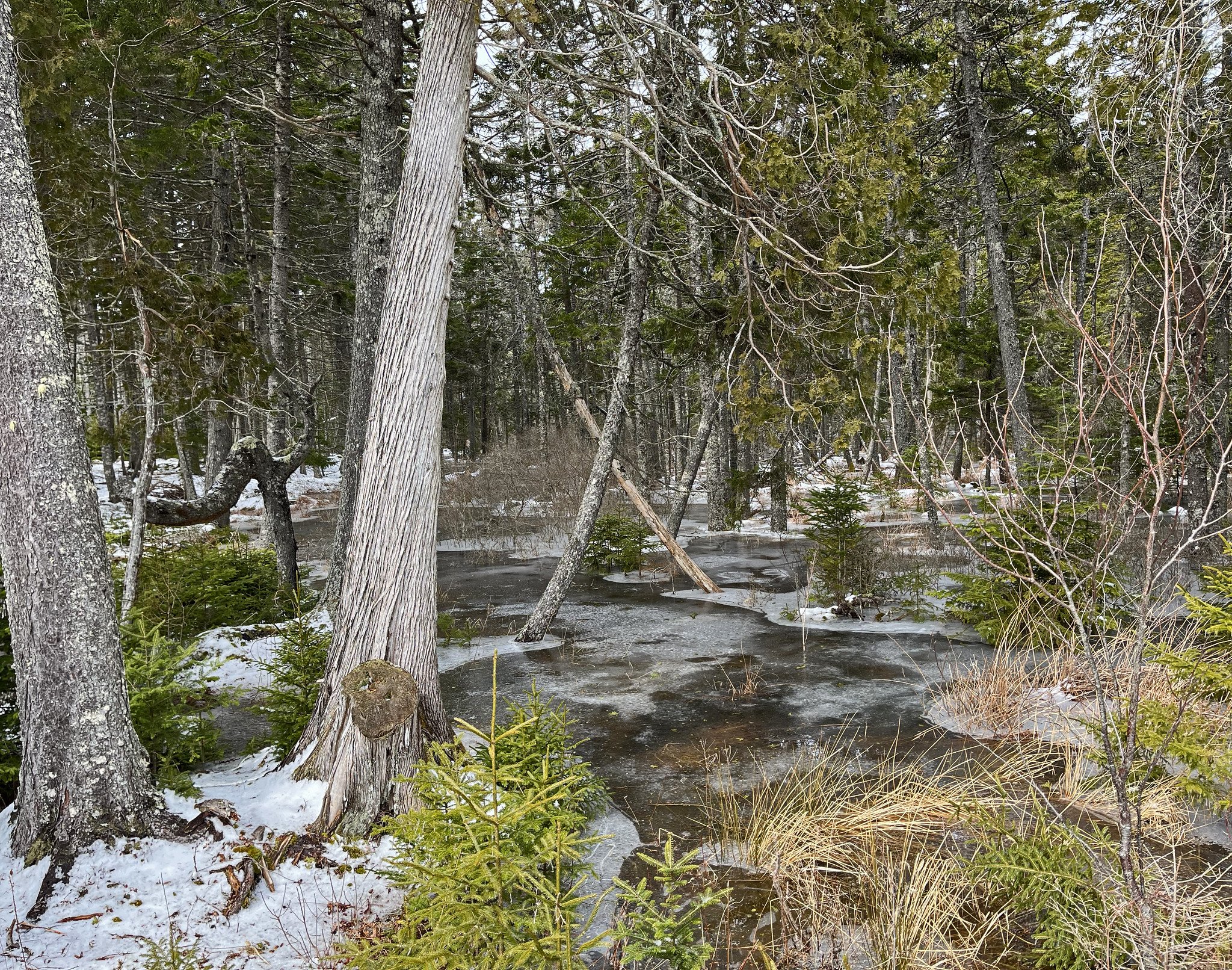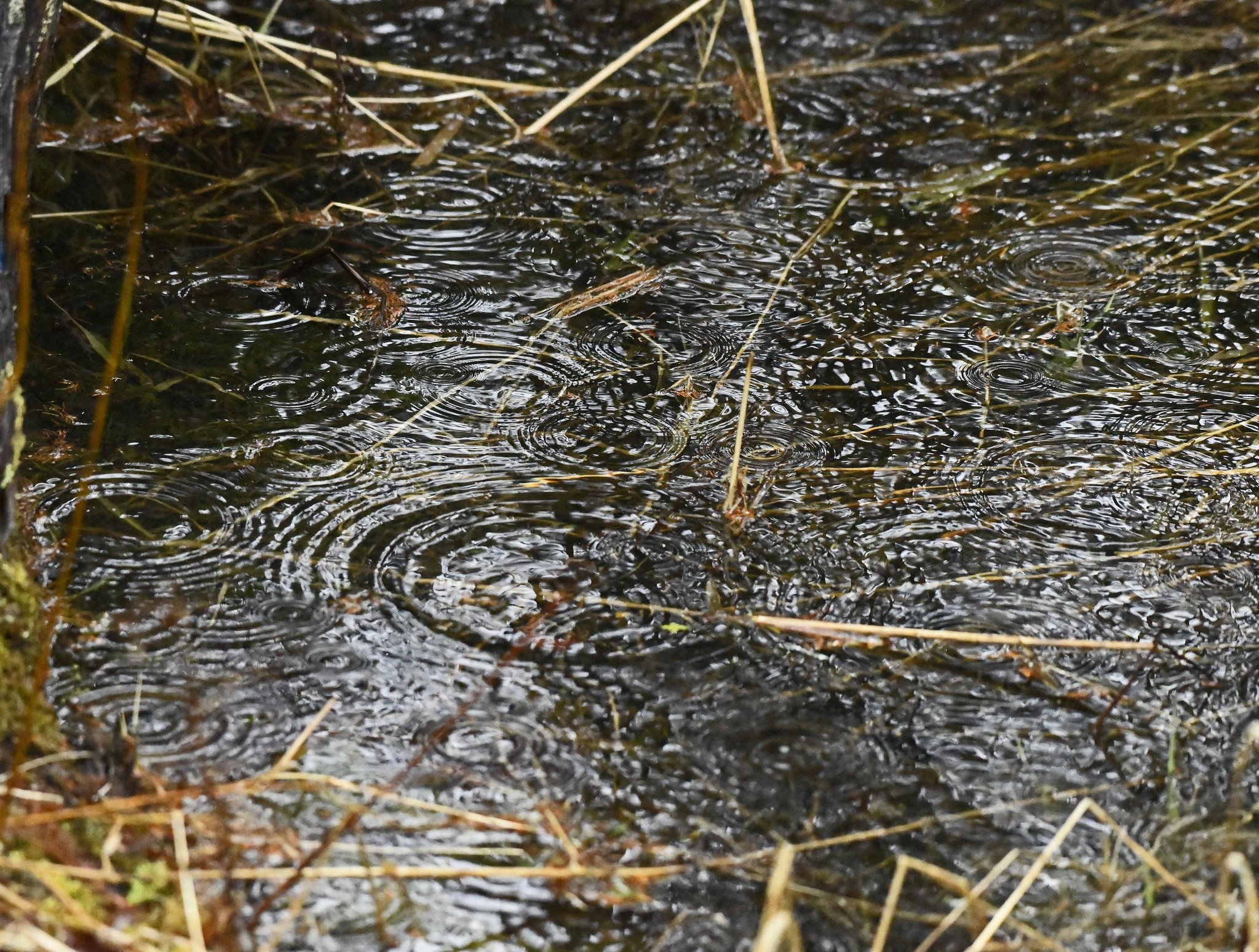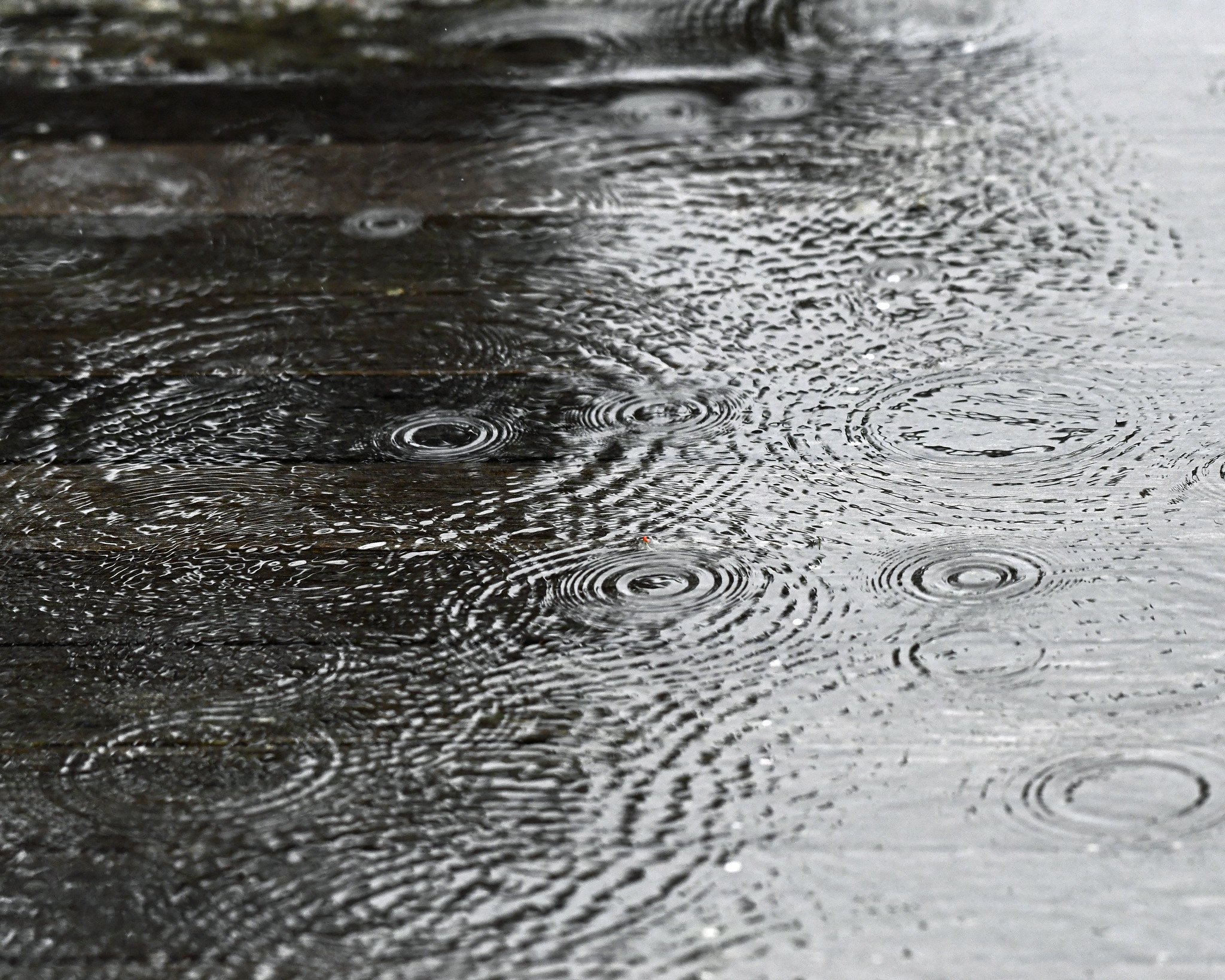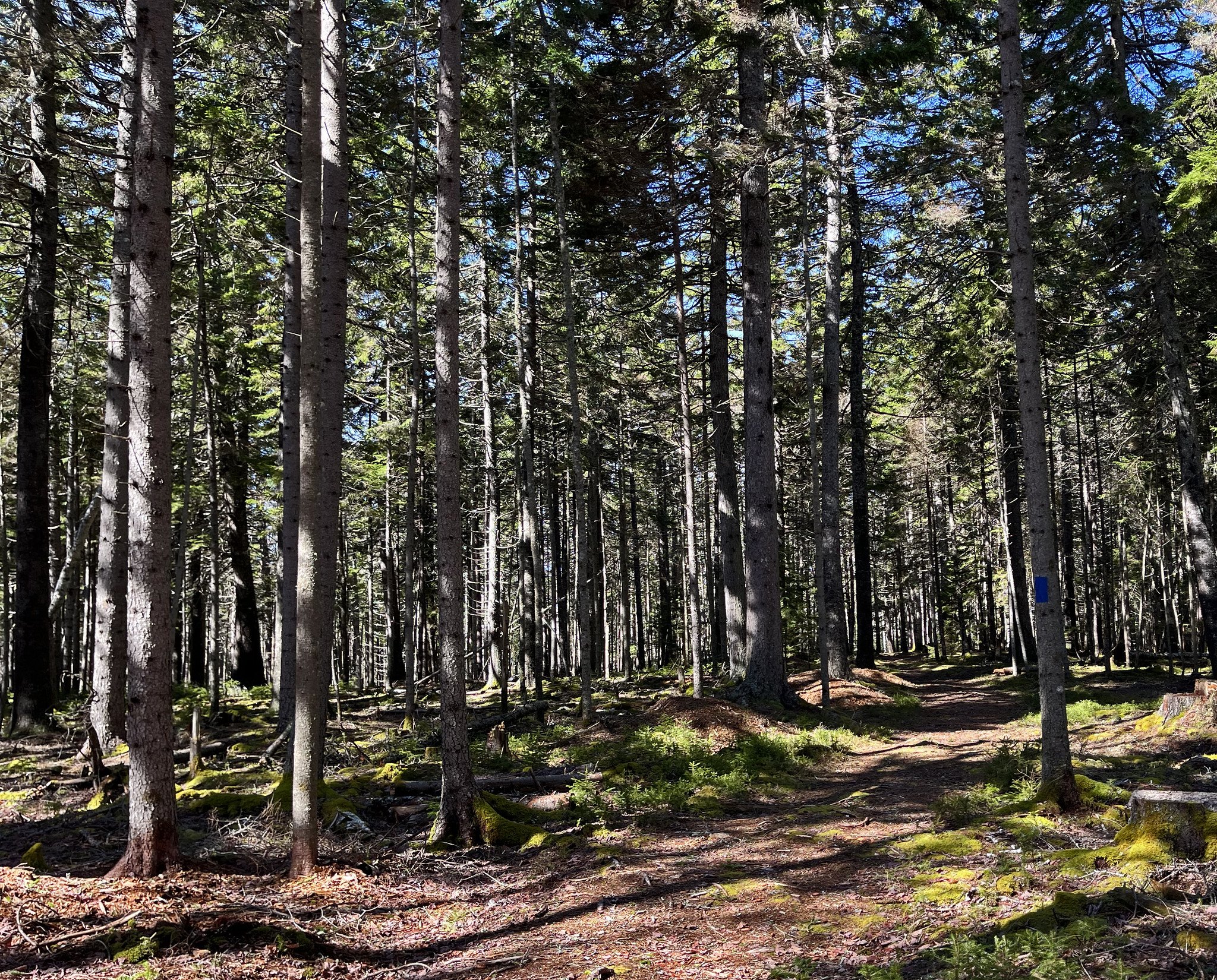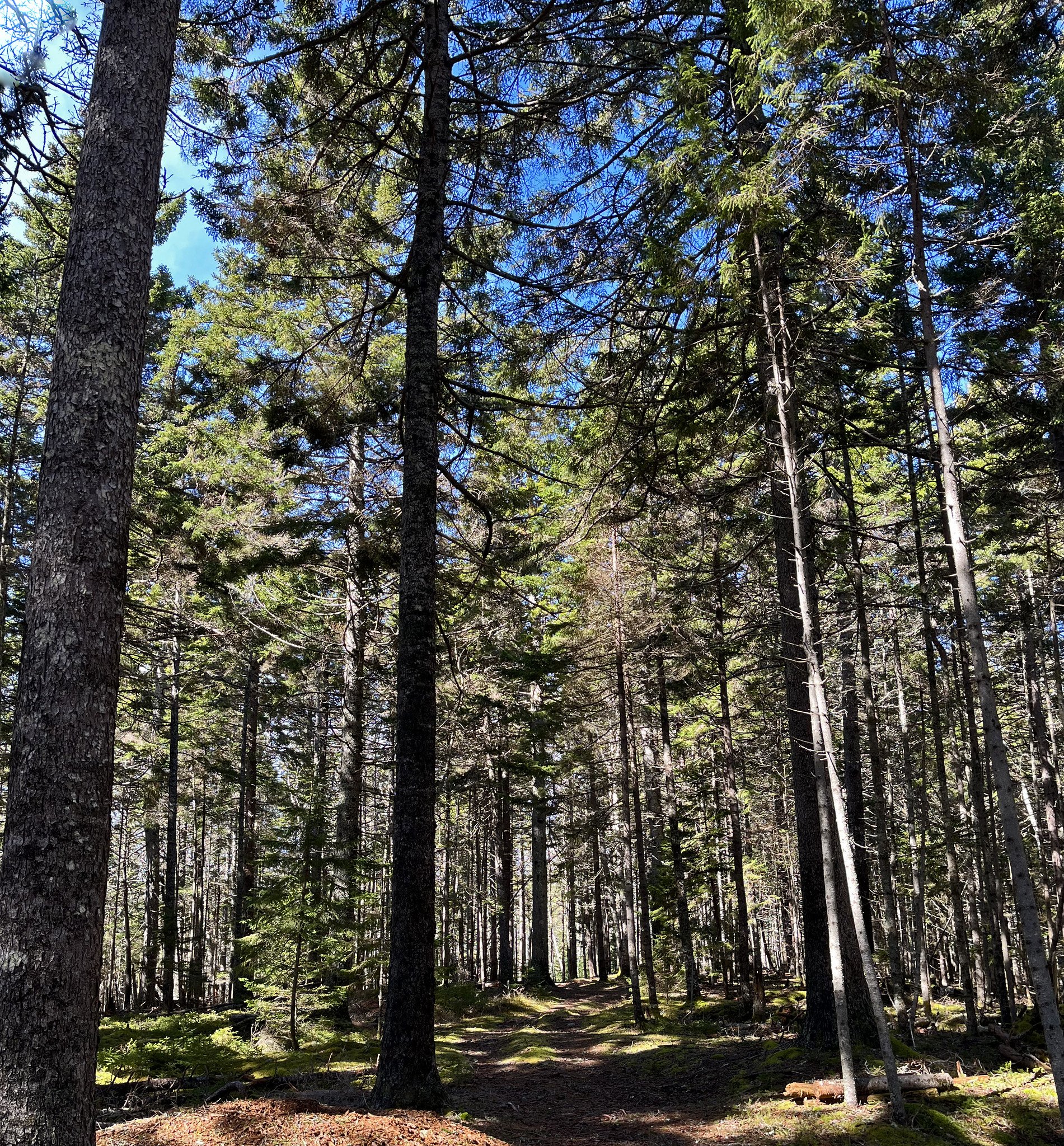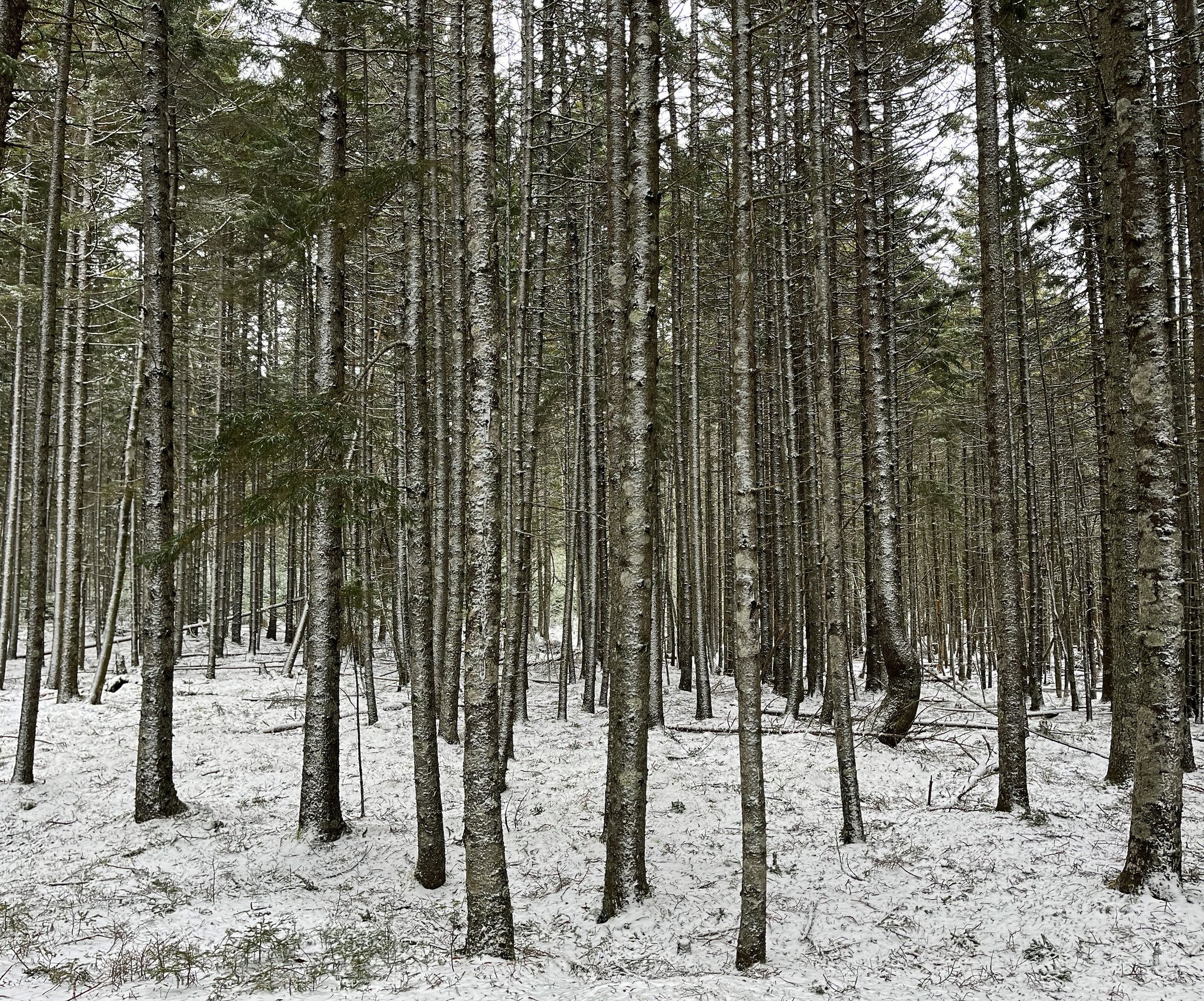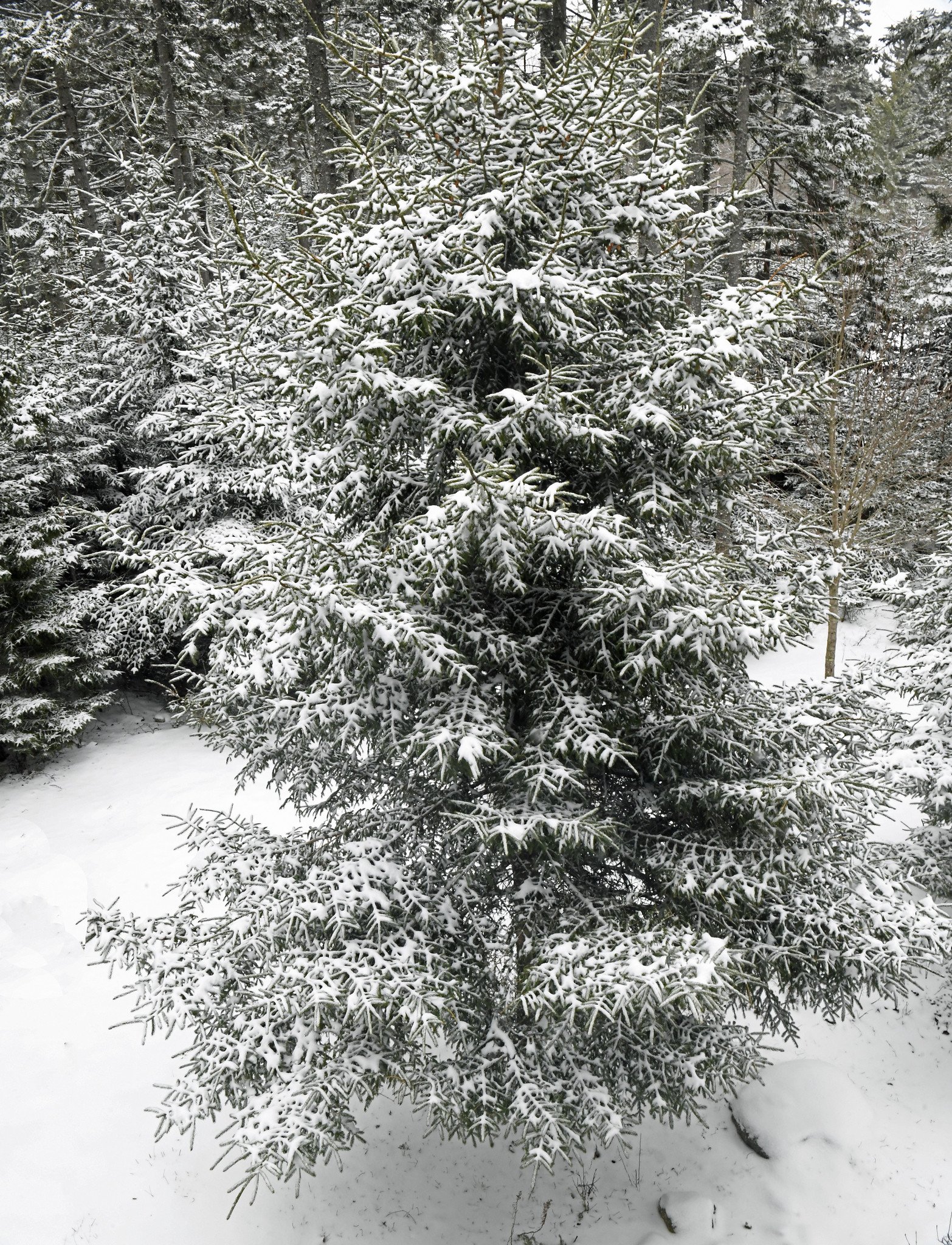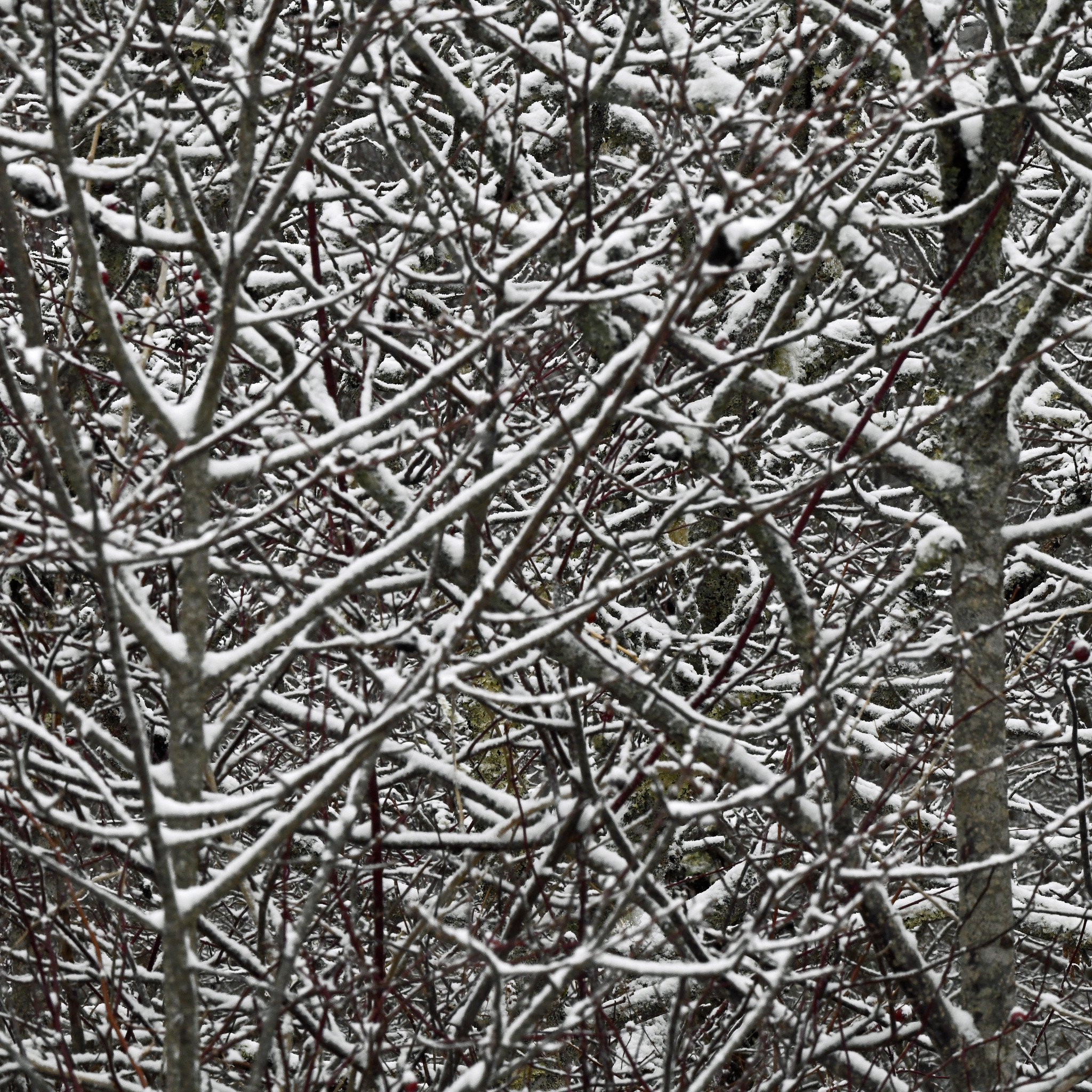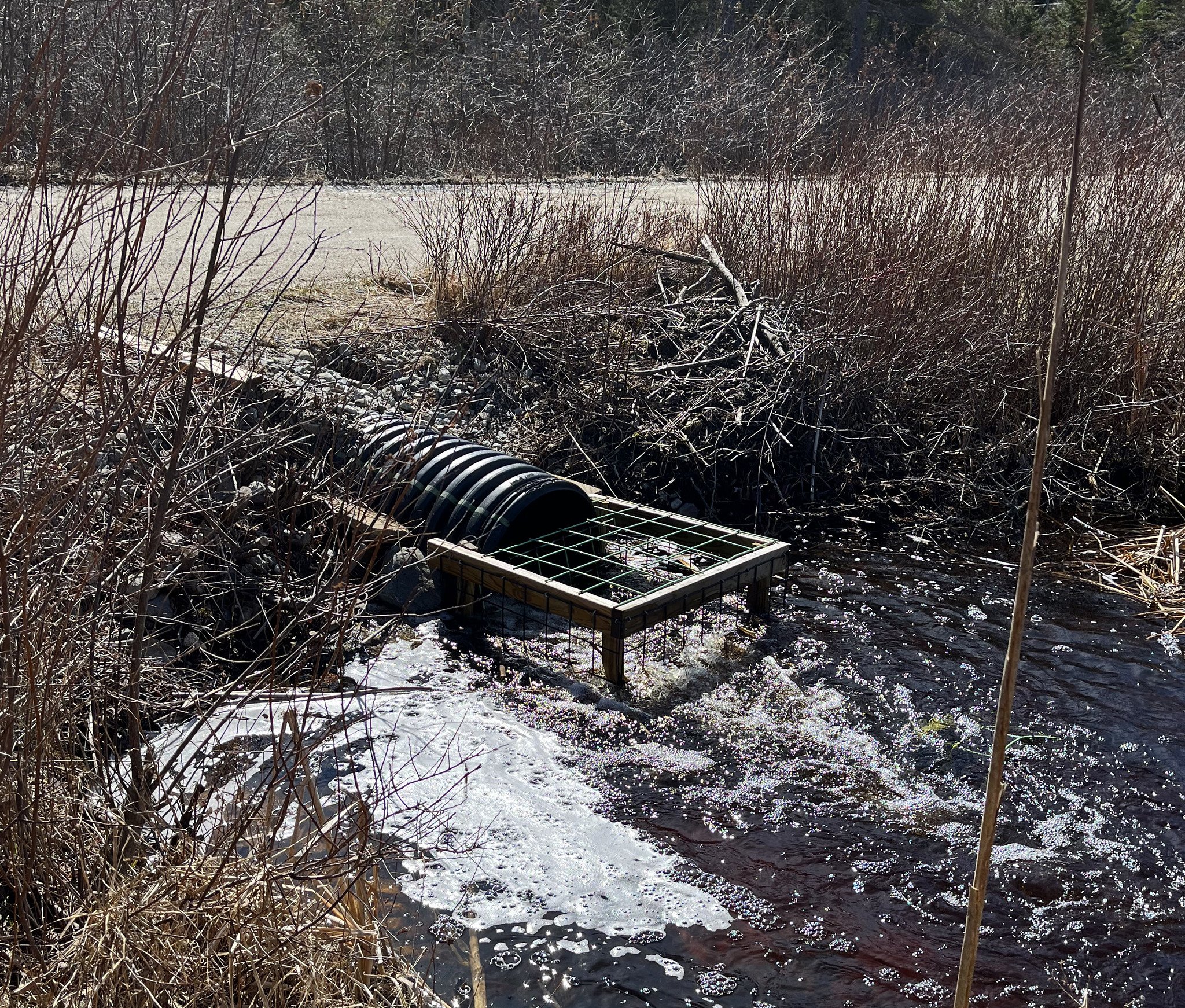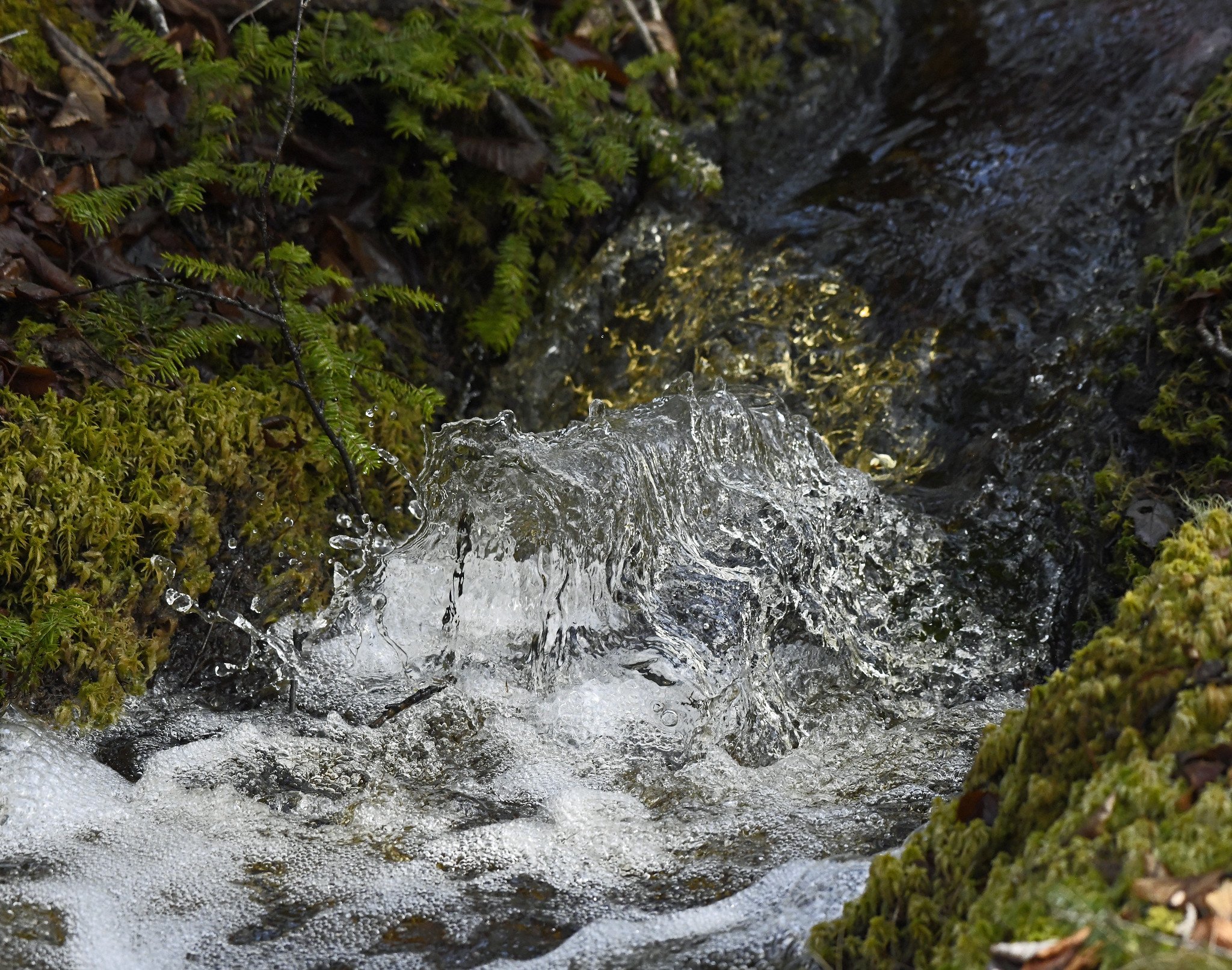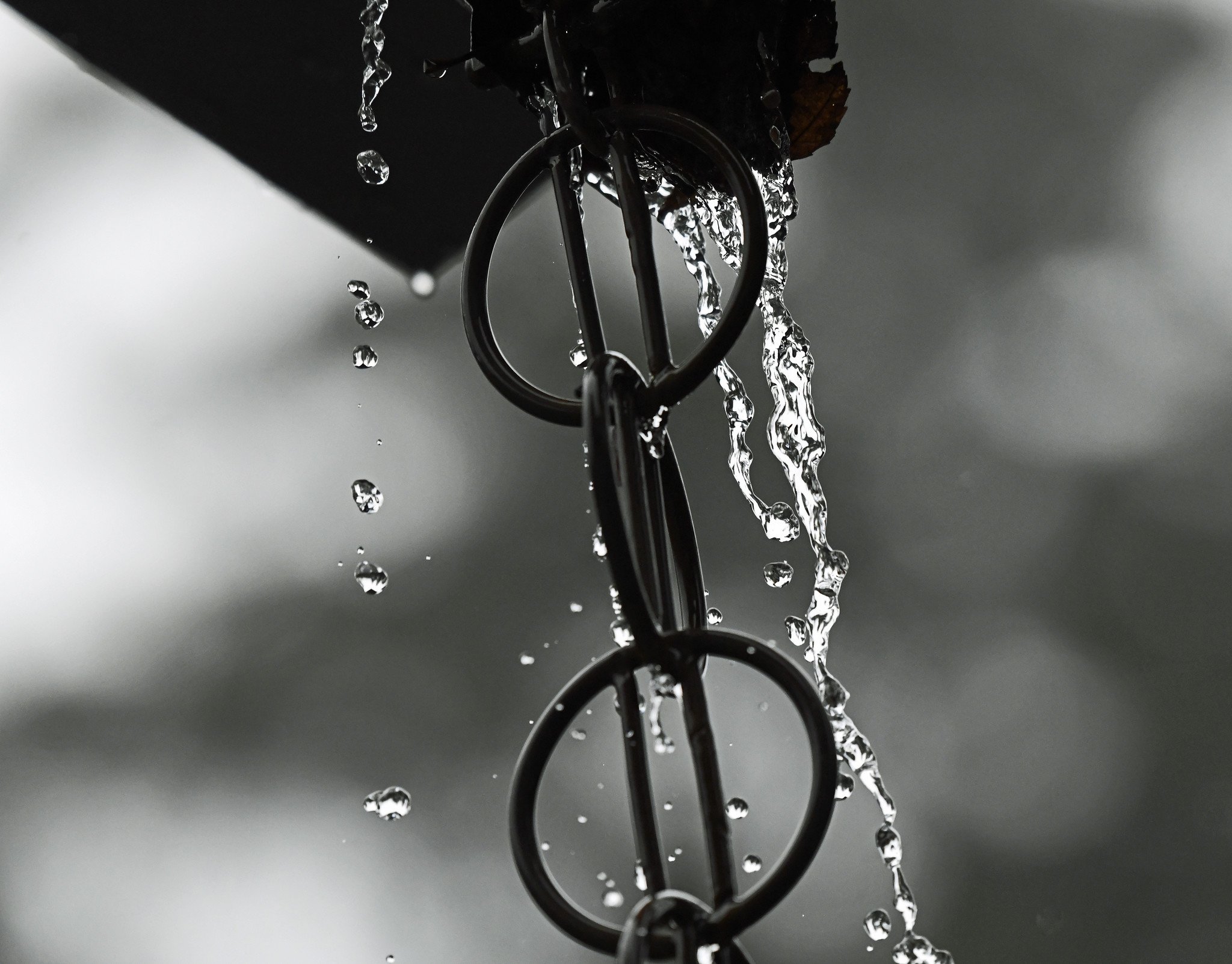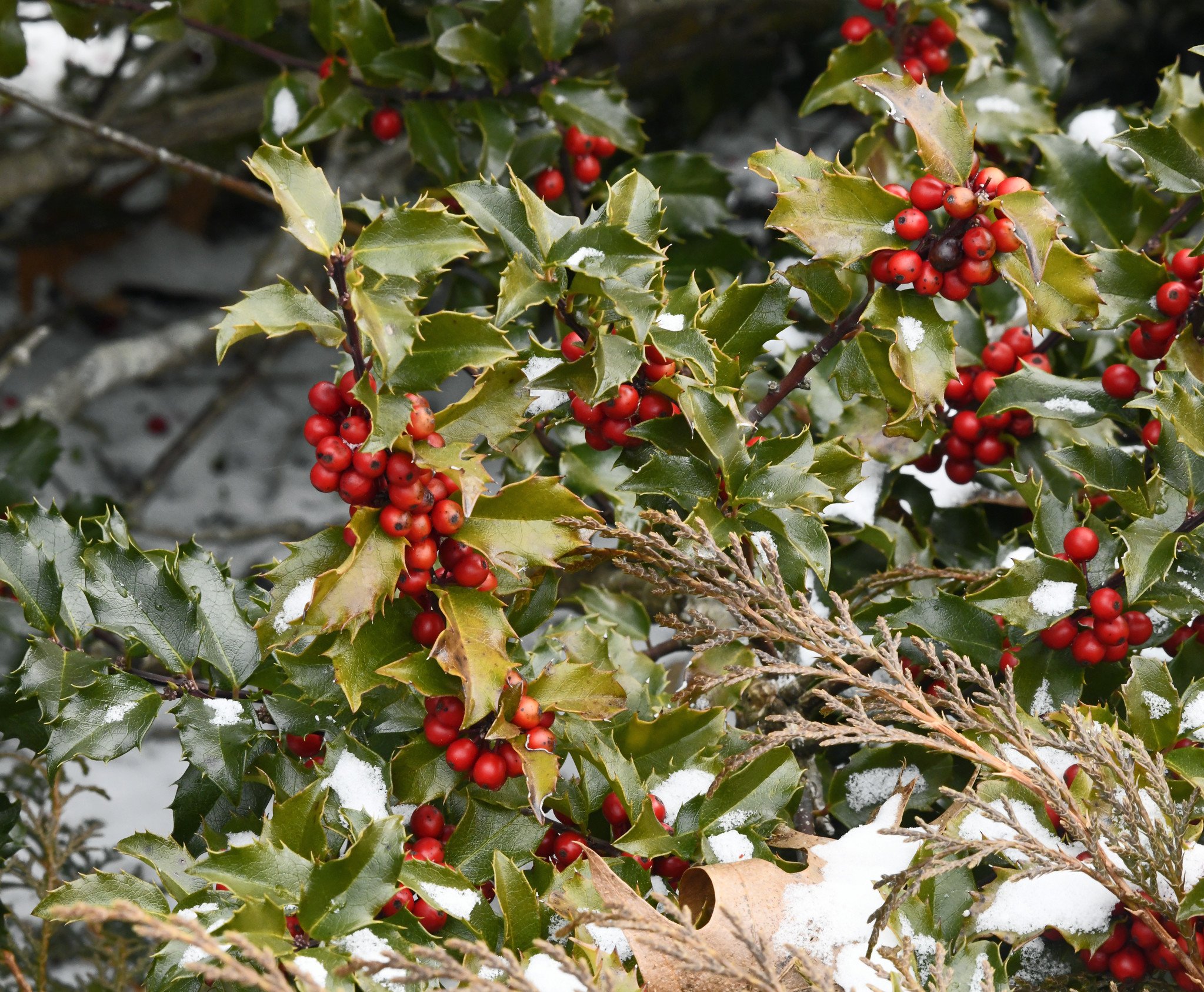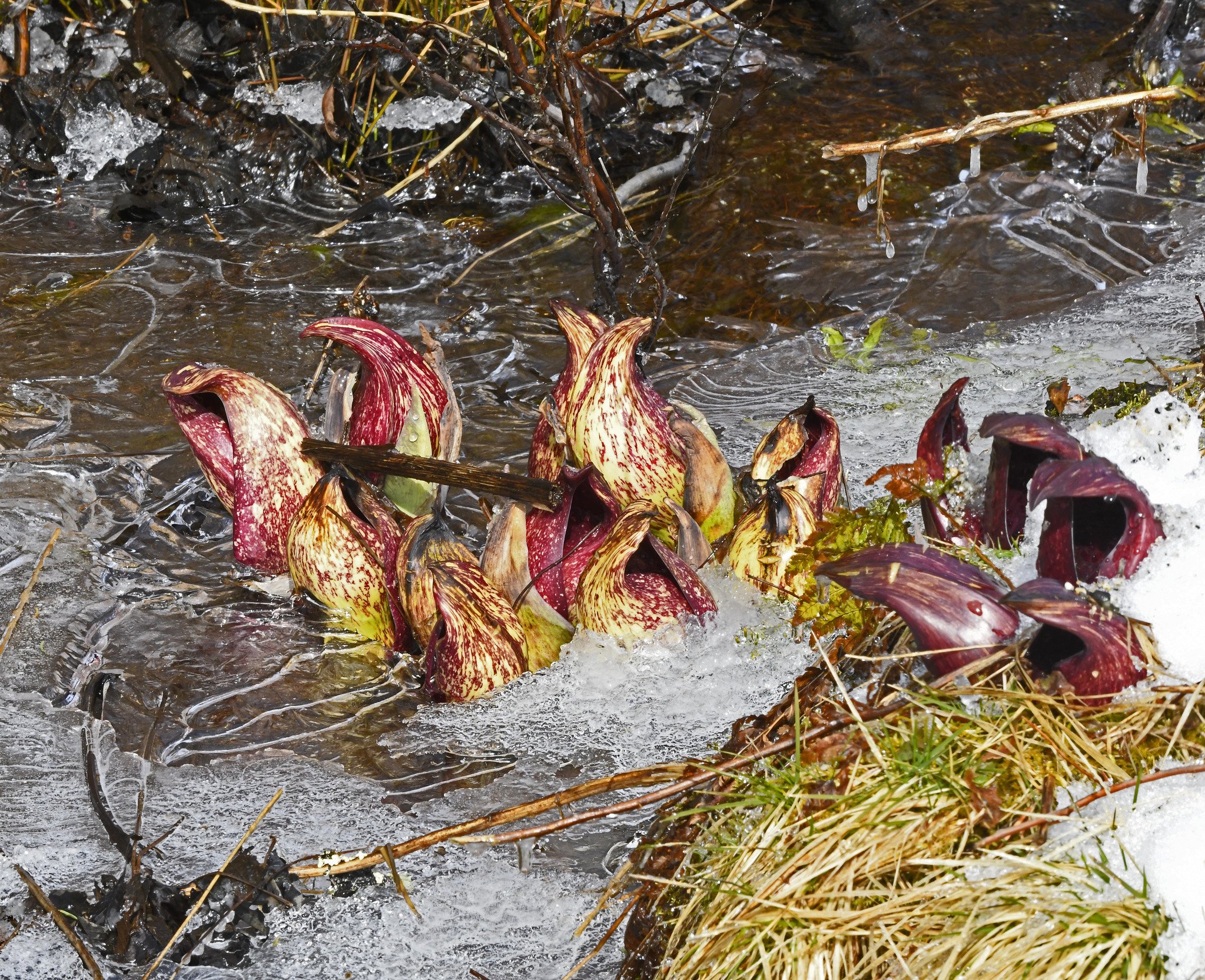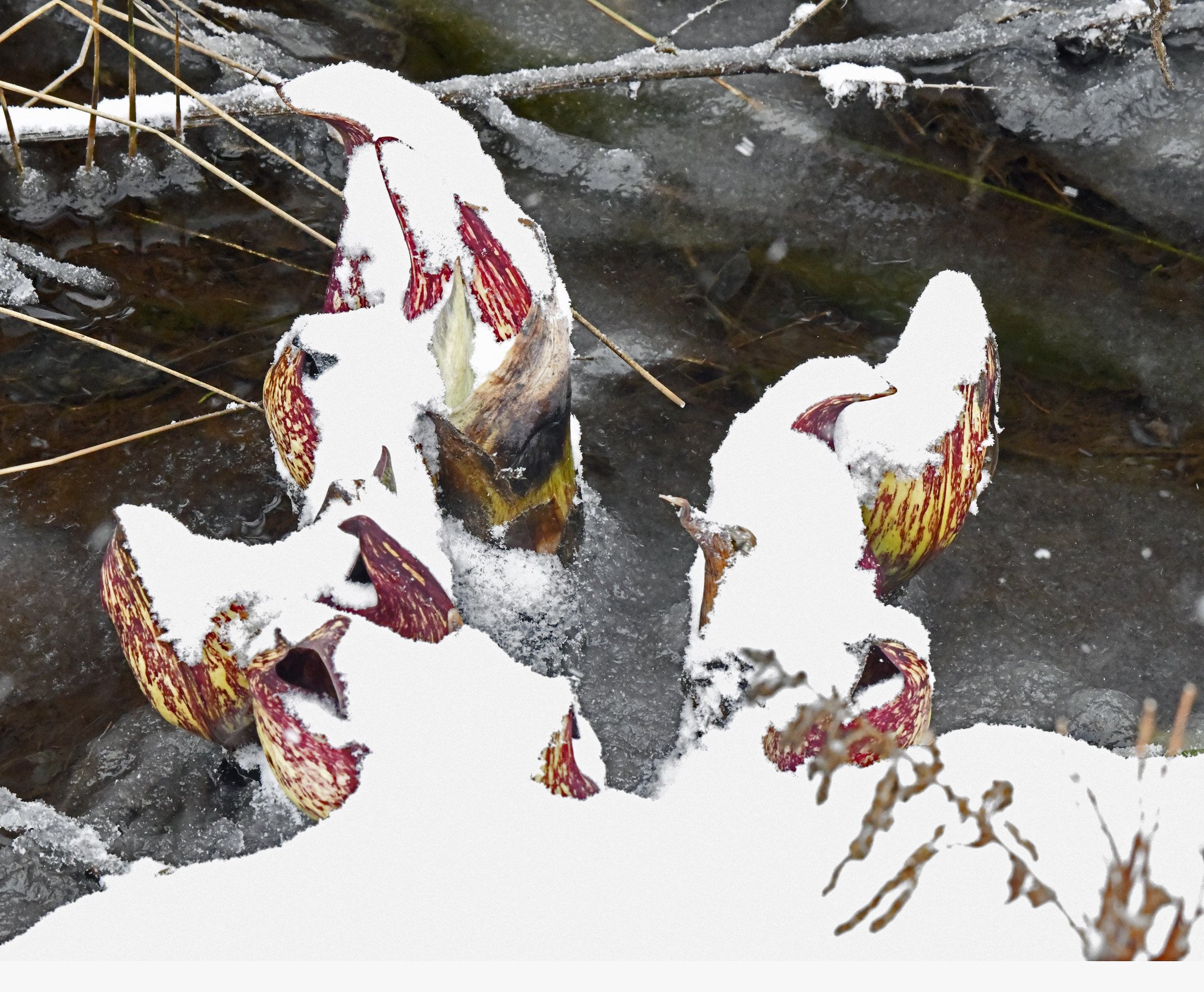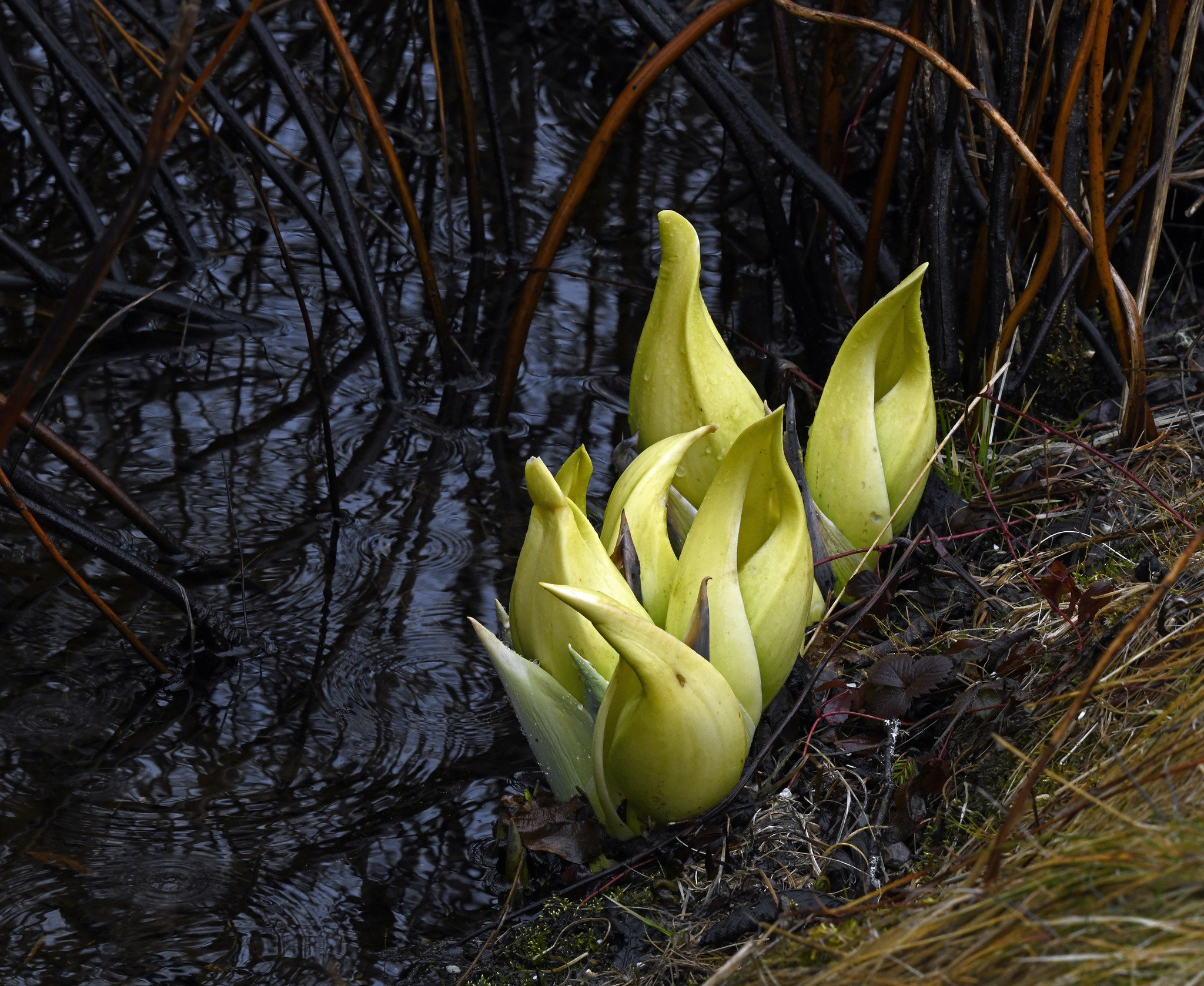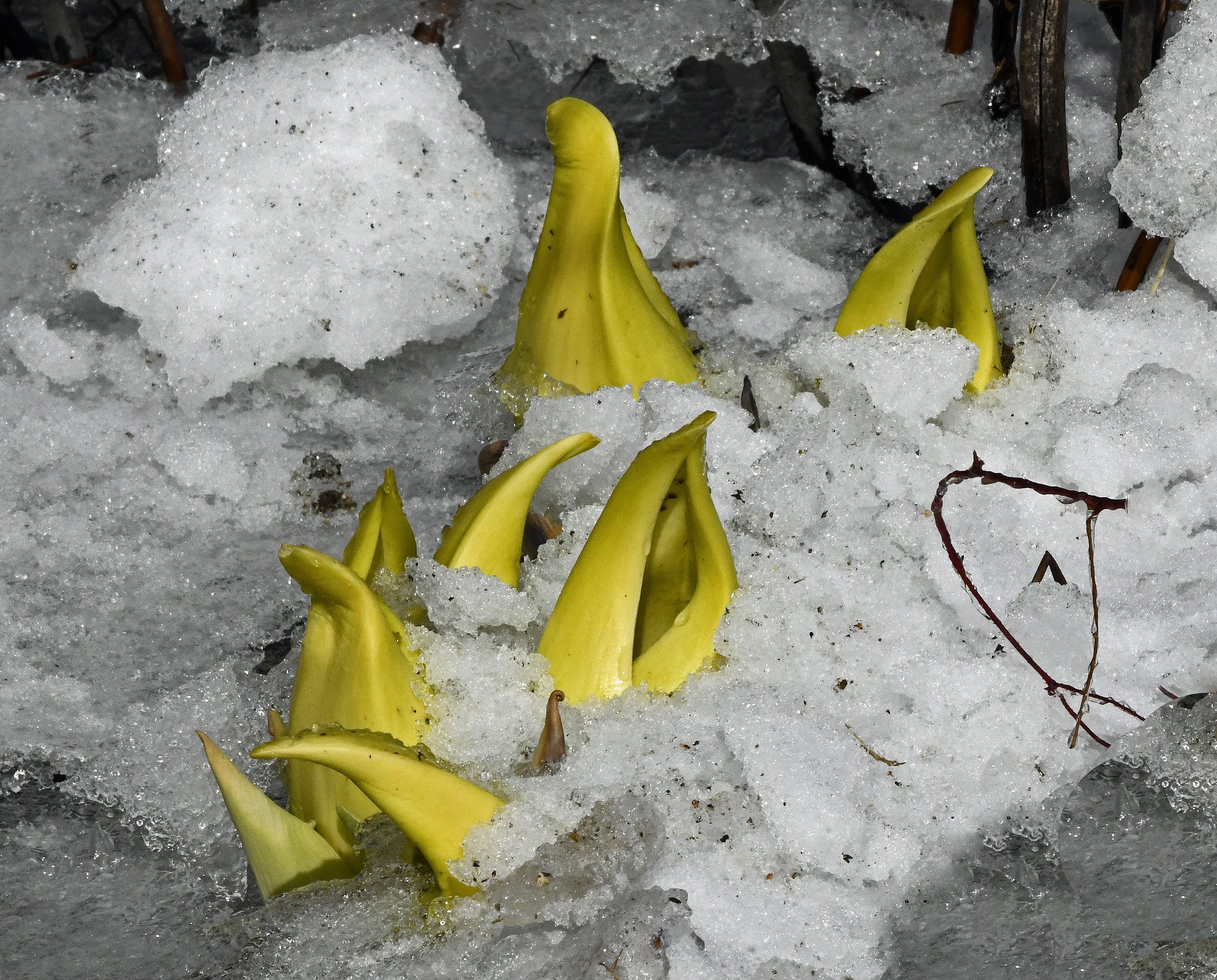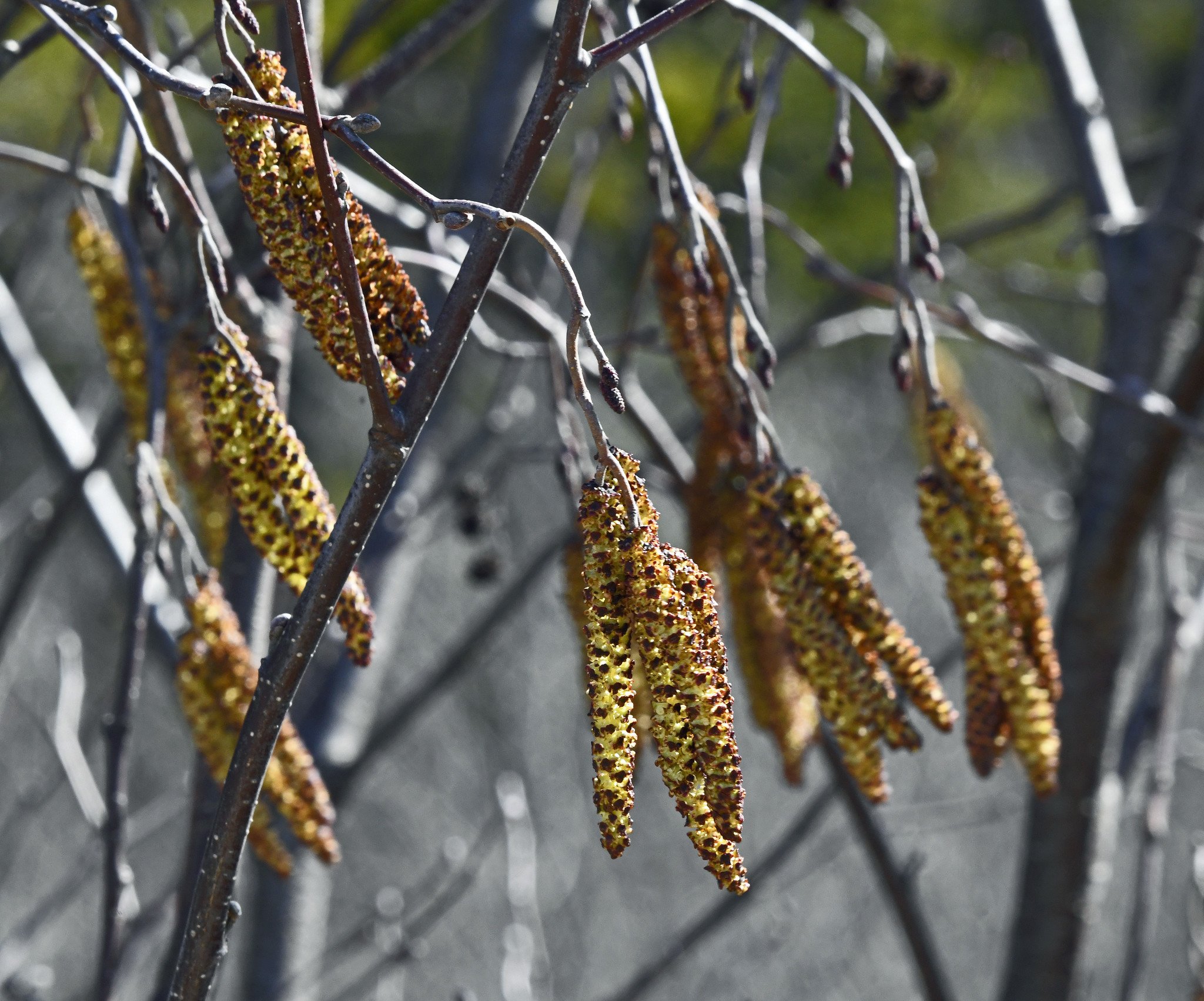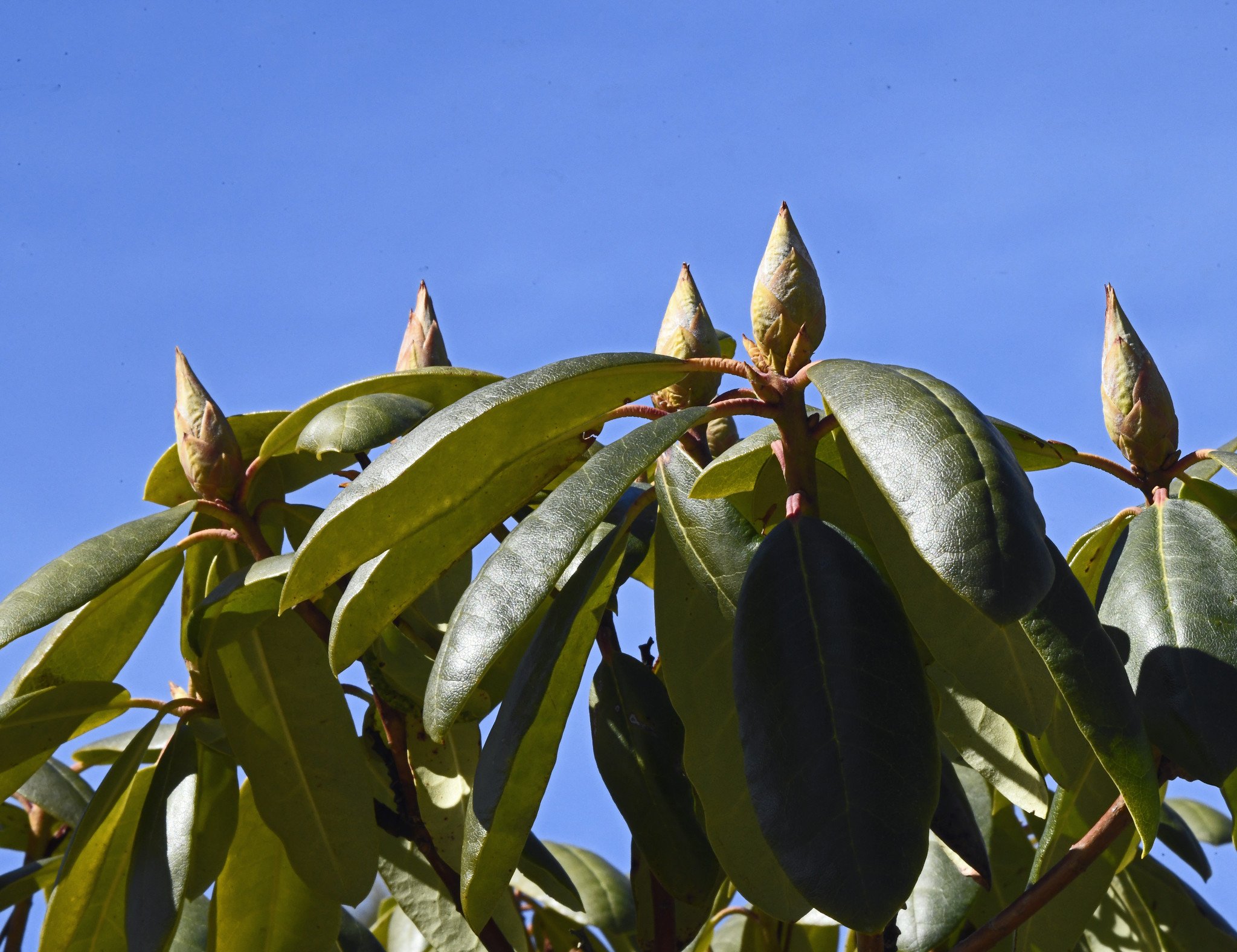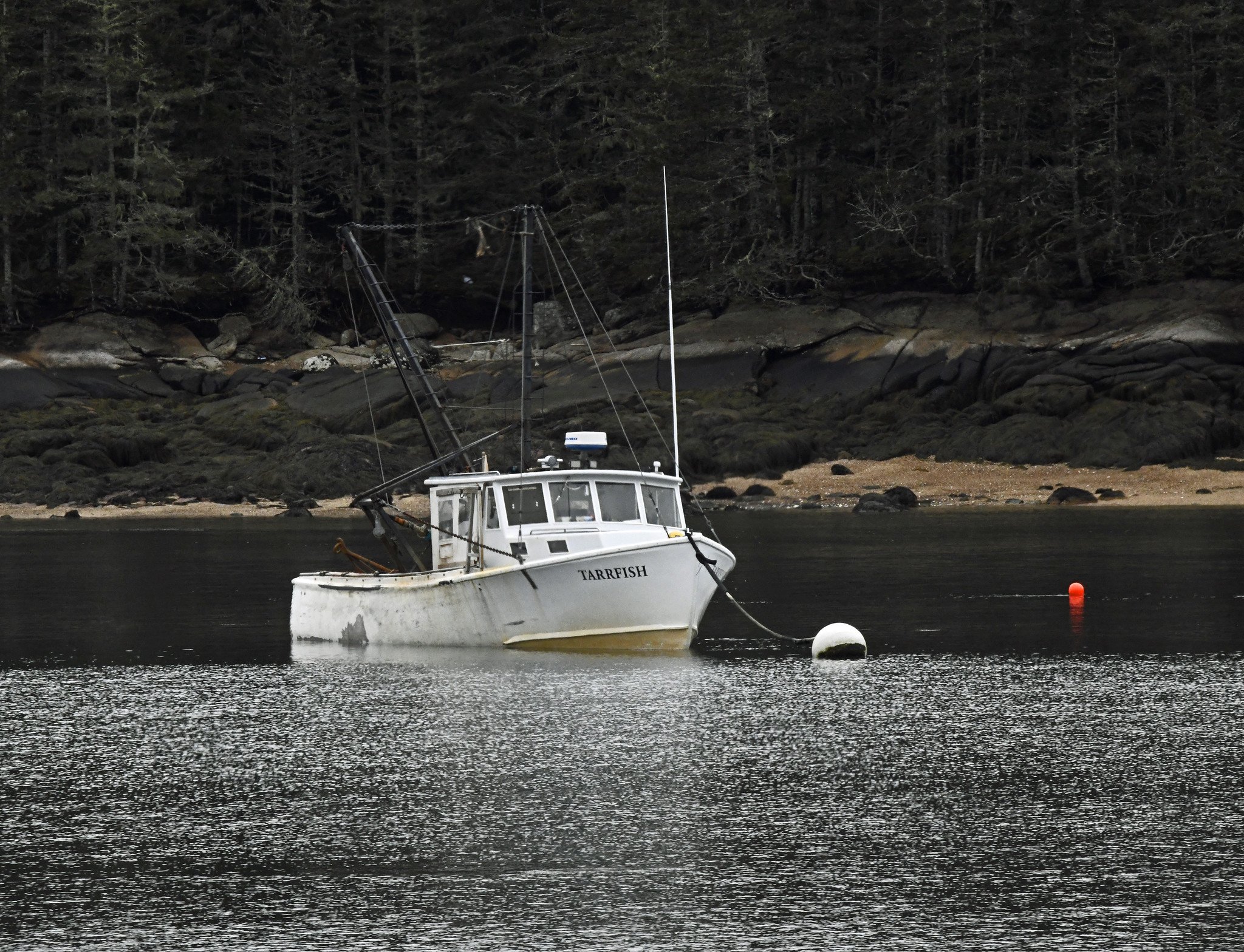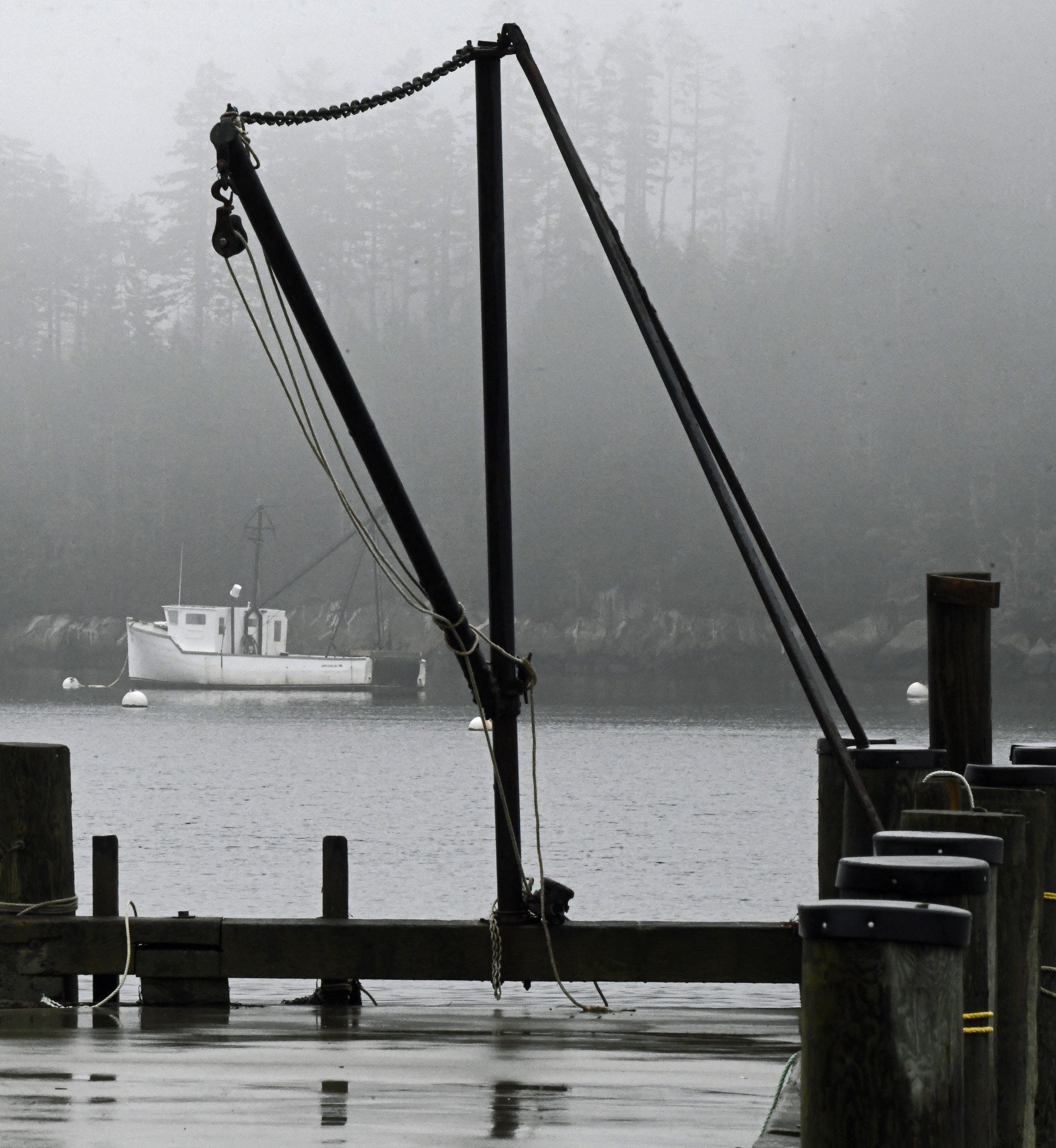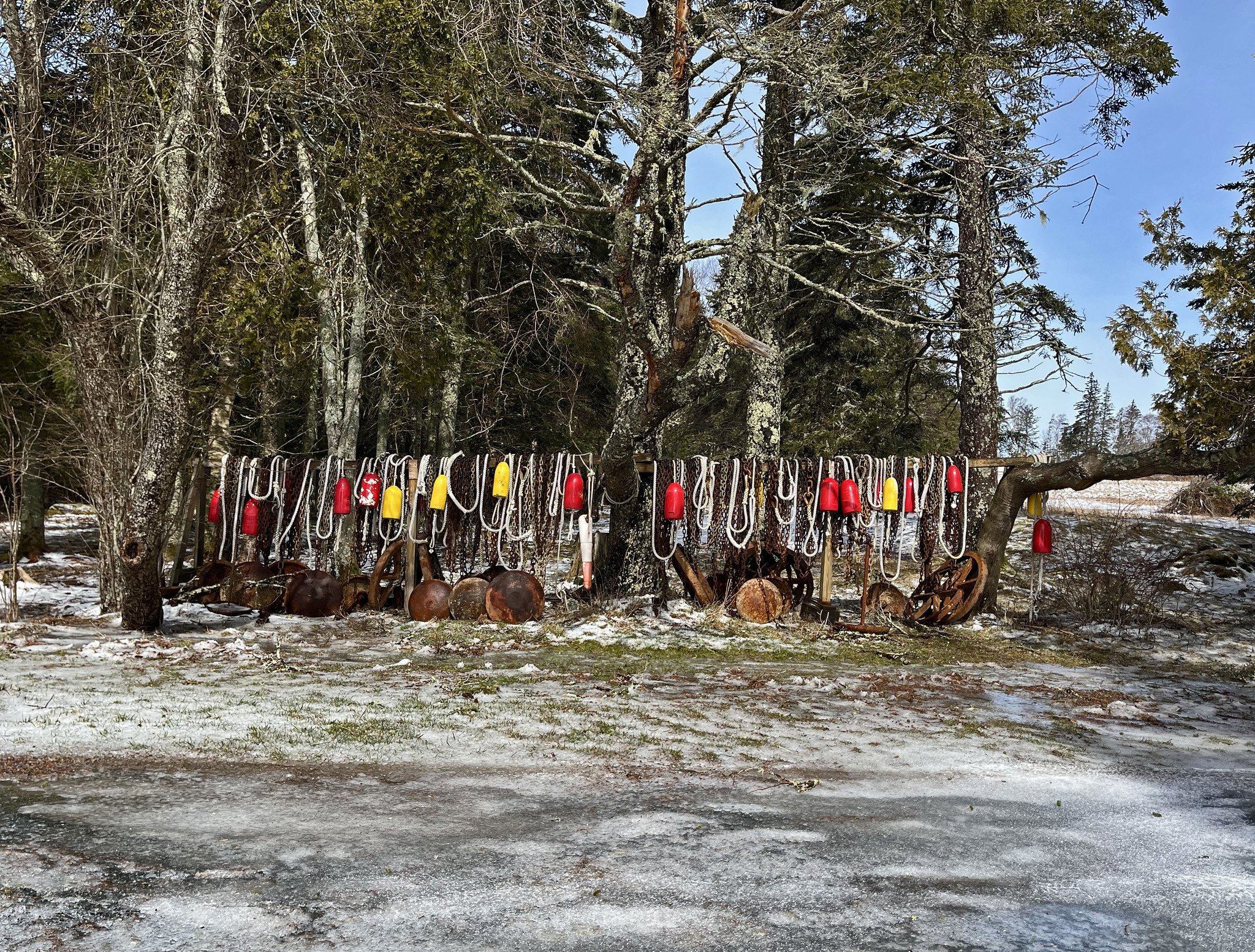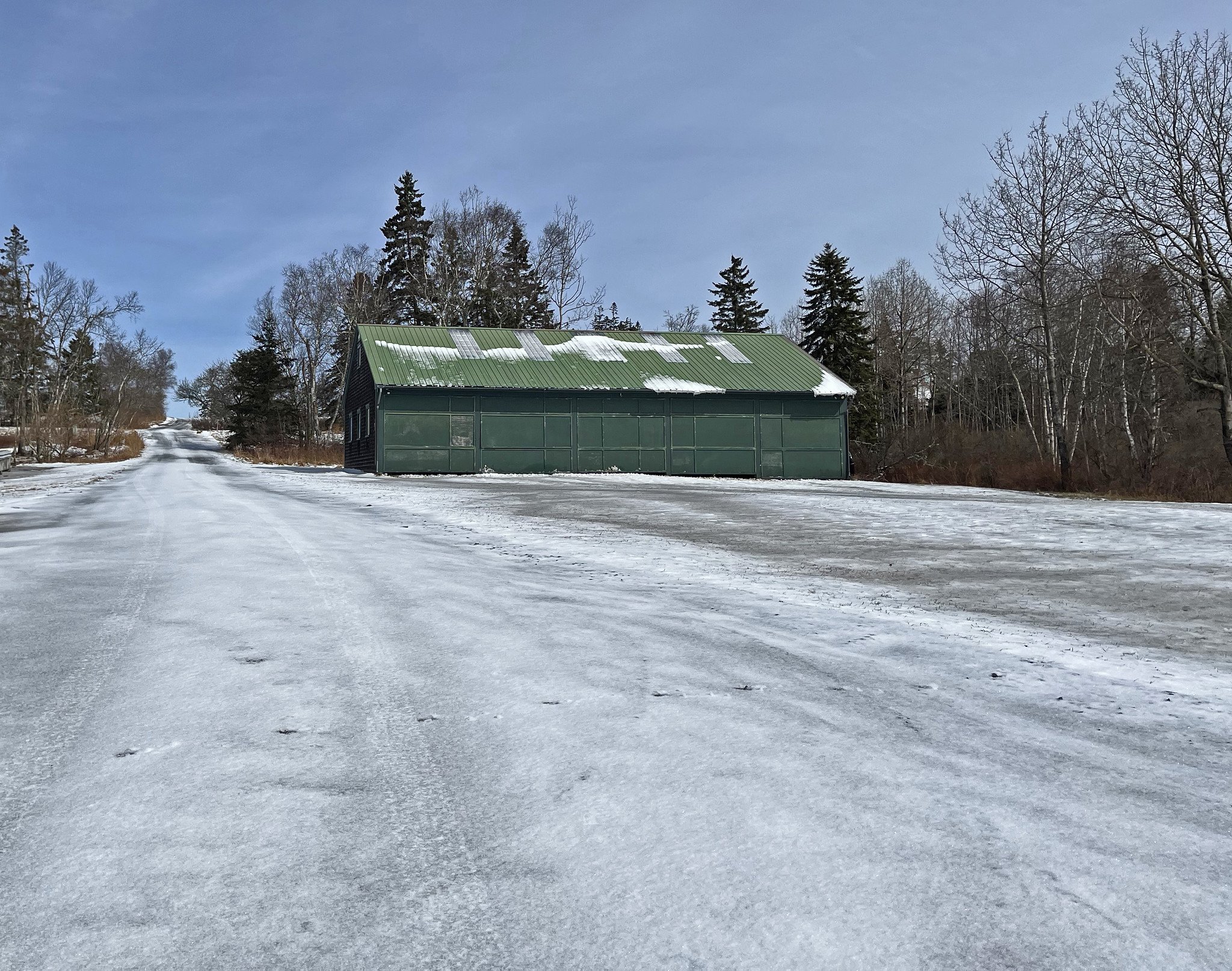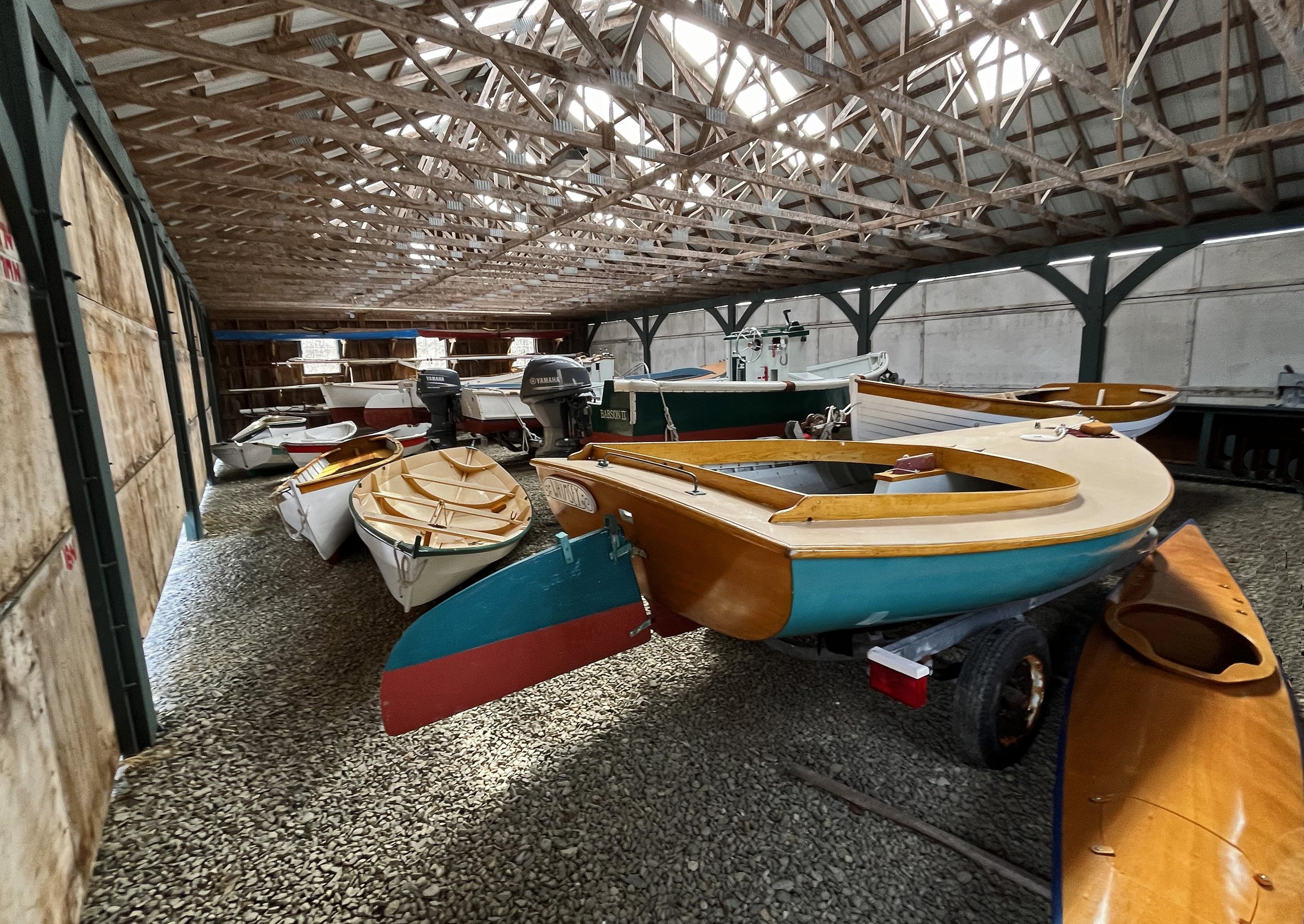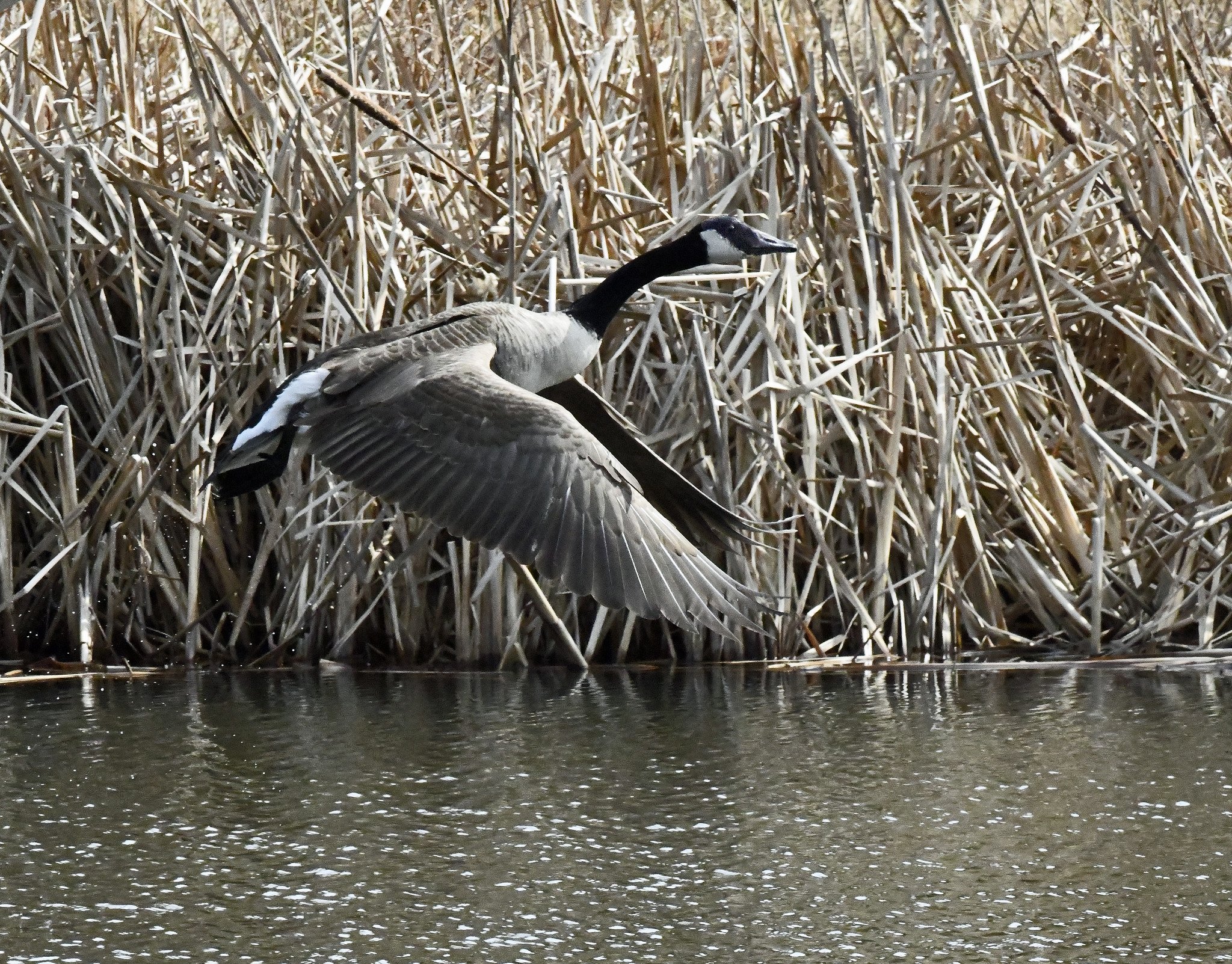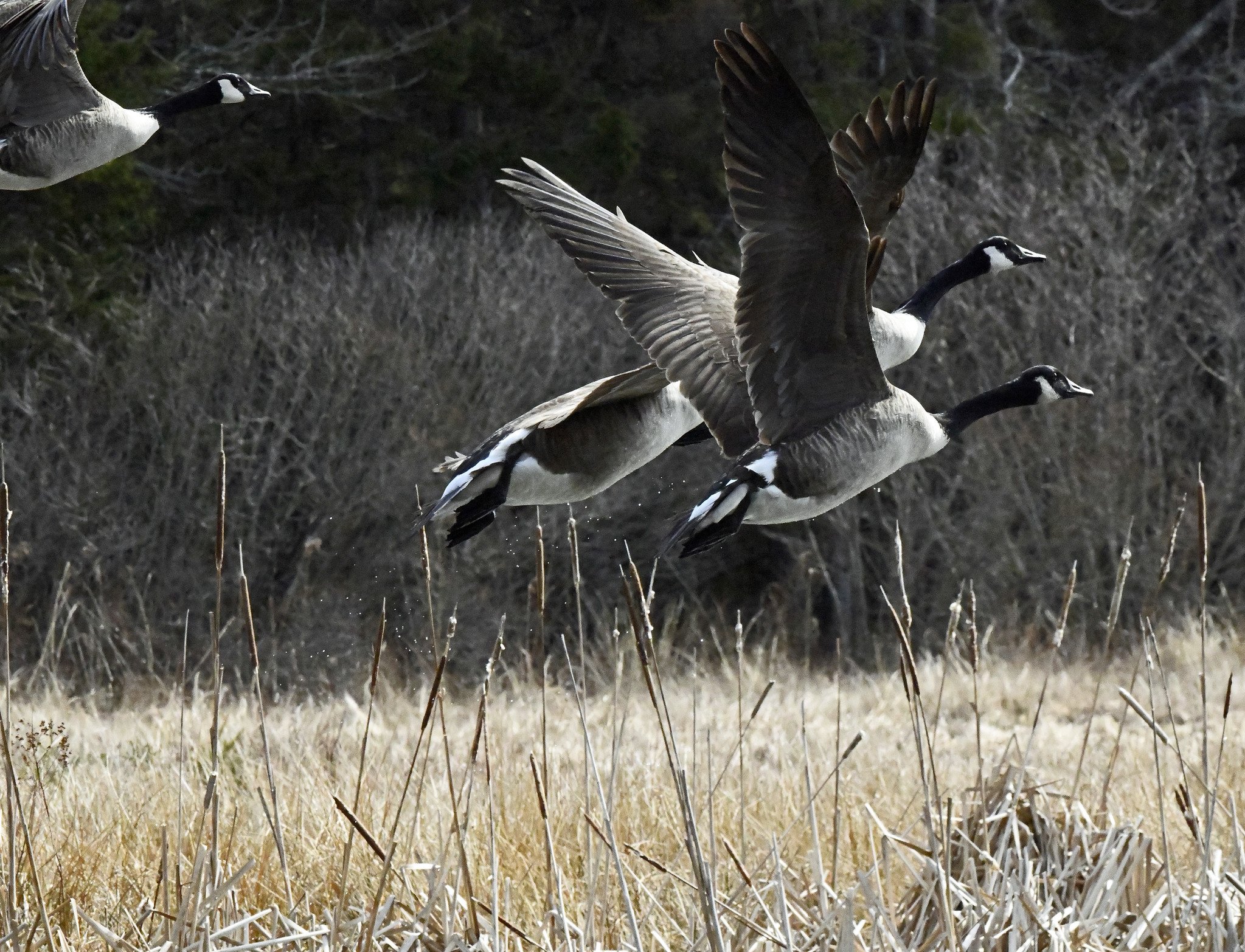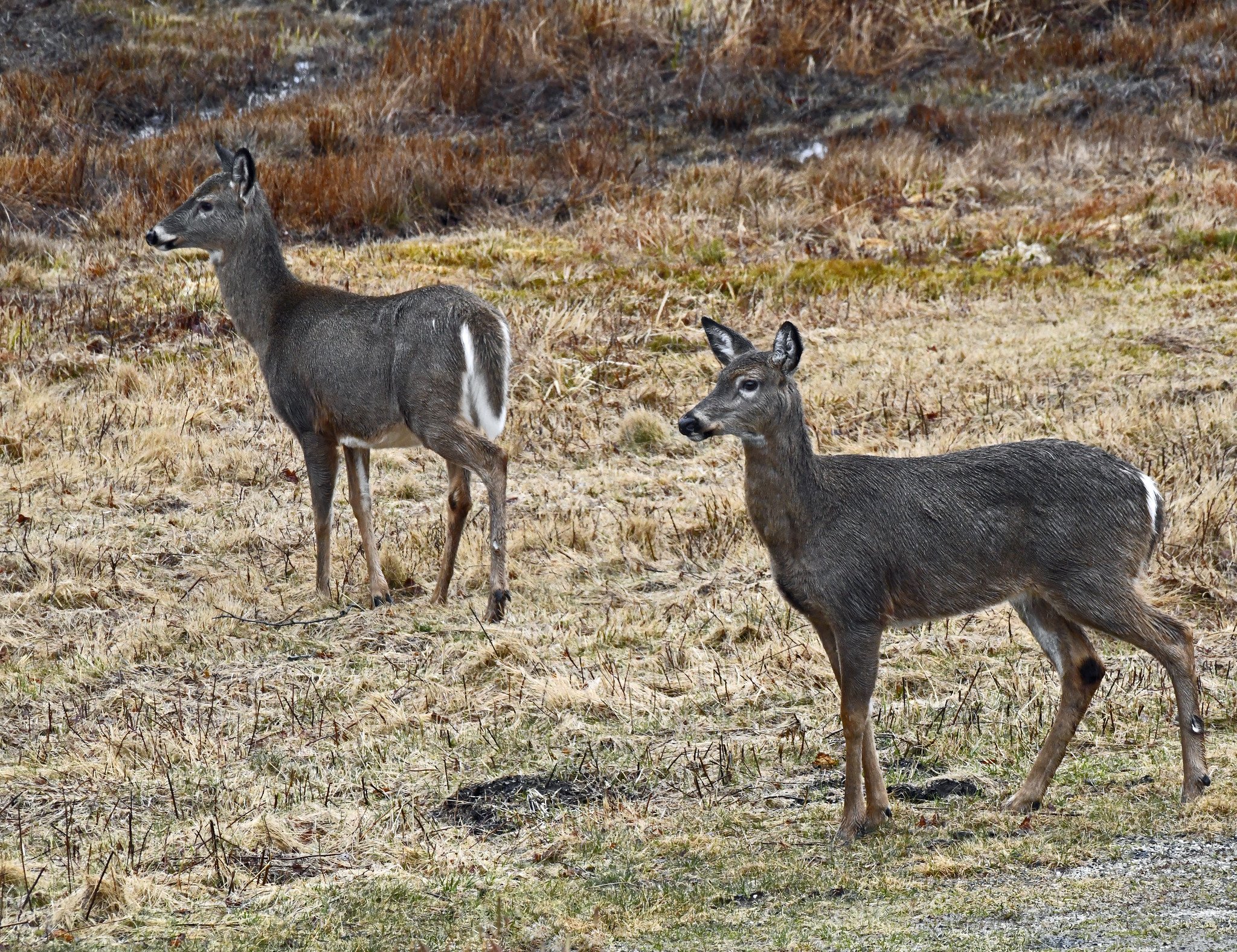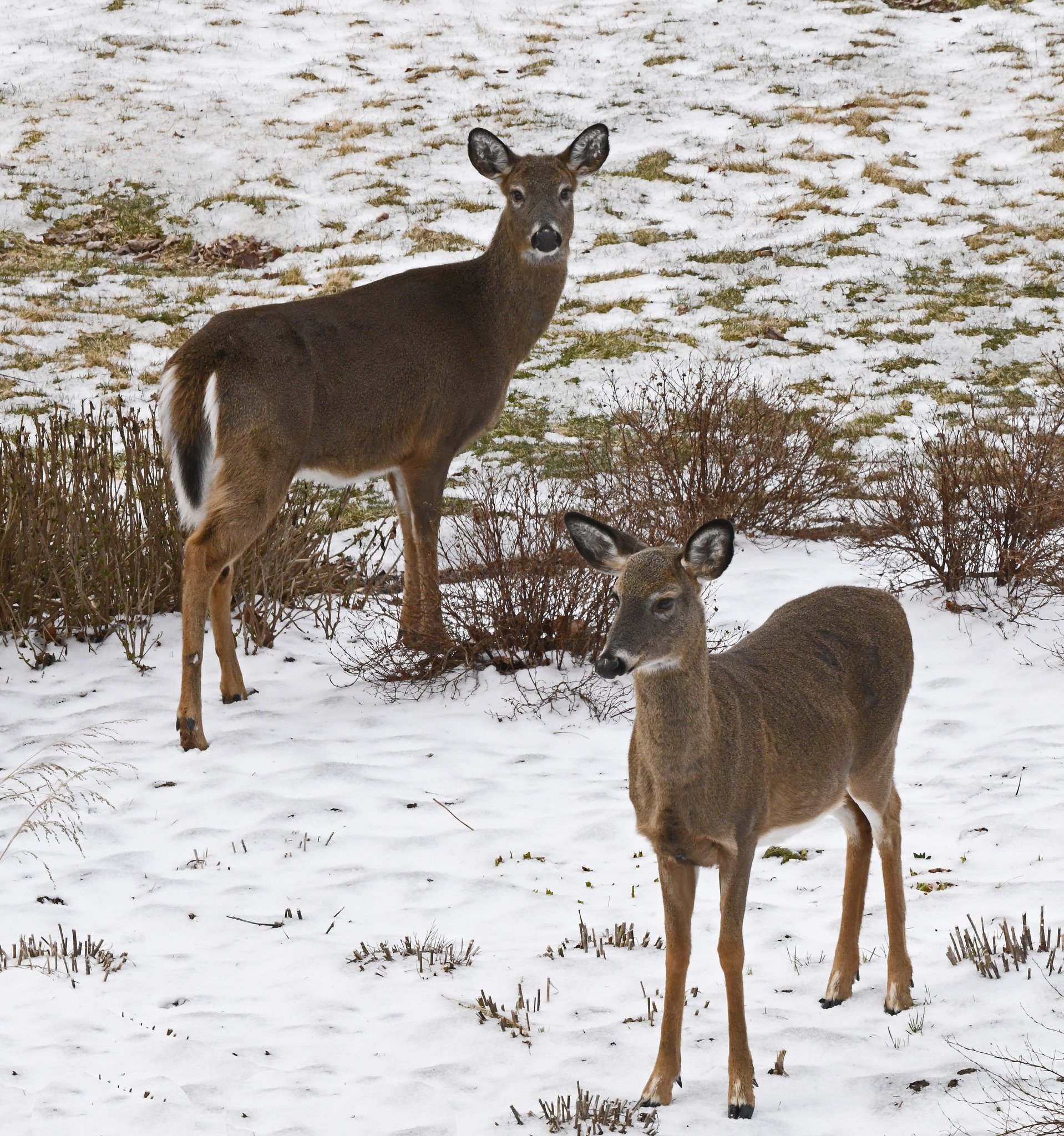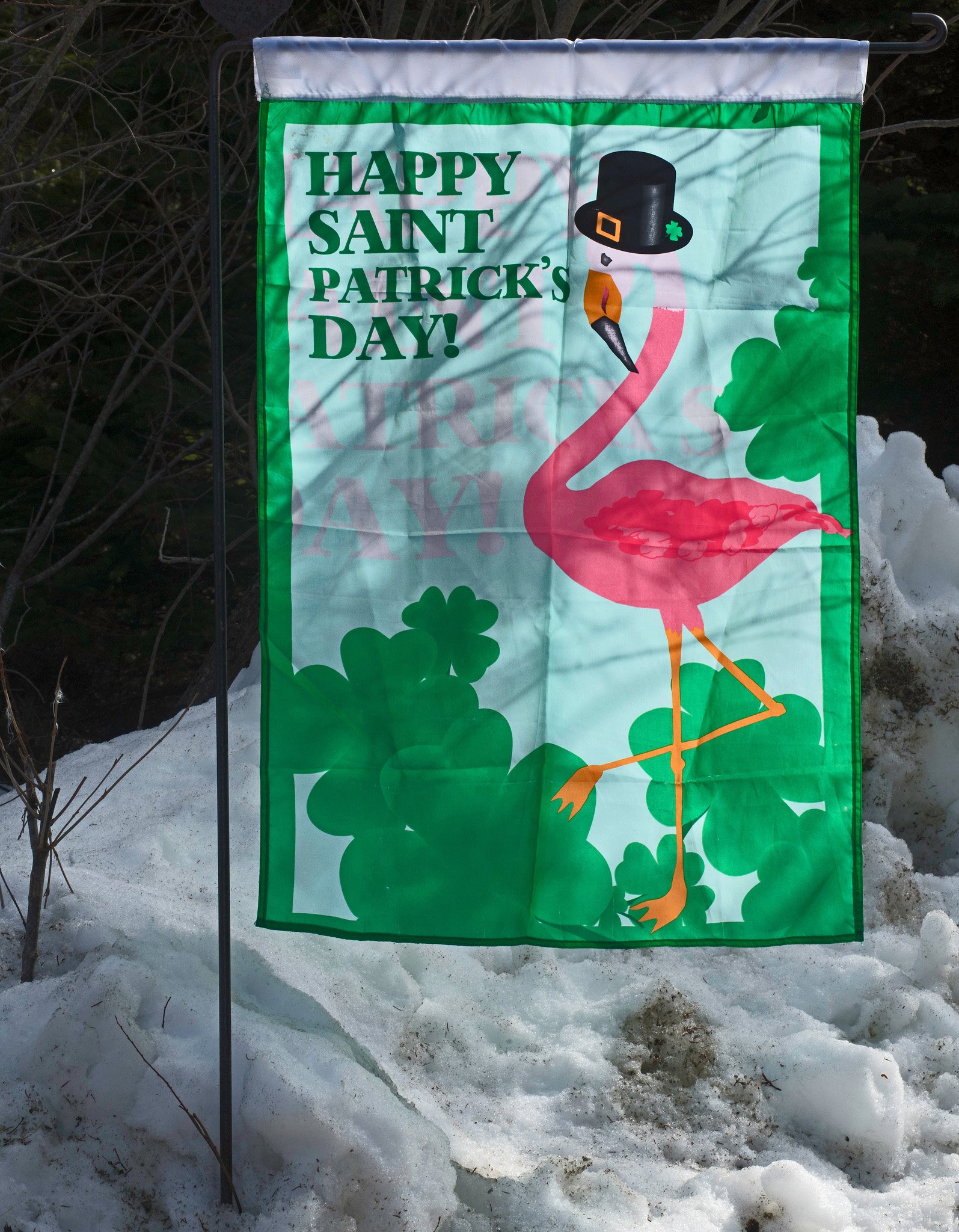Here you see Harriet doing what female ospreys mostly do in the very early spring: waiting in the nest for her mate to bring food home and engage with him in what has to be done for the survival of the species.
This year’s Harriet is a bit different from those of past years: She spends a good part of her time near the nest, but not on it. When Ozzie, her mate, comes to the nest, she’ll return to it at least for a while. Perhaps she senses that she’ll be spending quite a bit of time hunkered in that nest over eggs and then red-eyed nestlings. As usual for male ospreys, Ozzie does not spend extended periods in the nest. He comes and goes:
But Ozzie has been steadfast in bringing fresh fish home and fulfilling his other male responsibilities – including coming out of the blue when Harriet screams at a threat. There has been at least one other osprey interested in either Harriet or the nest, or both, but Harriet always screams osprey obscenities at the intruder and Ozzie always arrives like the cavalry. He viciously drives away the intruder, sometimes with Harriet’s eager help.
(Images taken in Brooklin, Maine, om April 16 and 19, 2024.)












